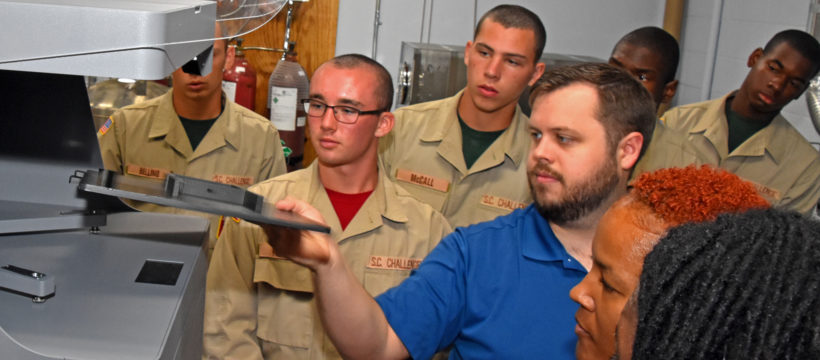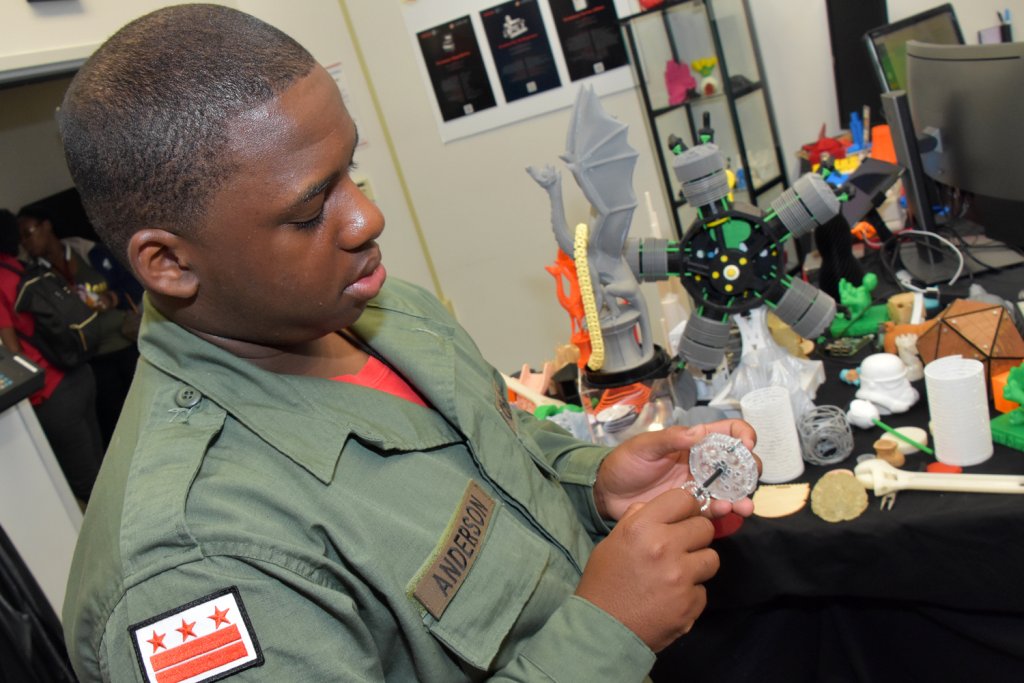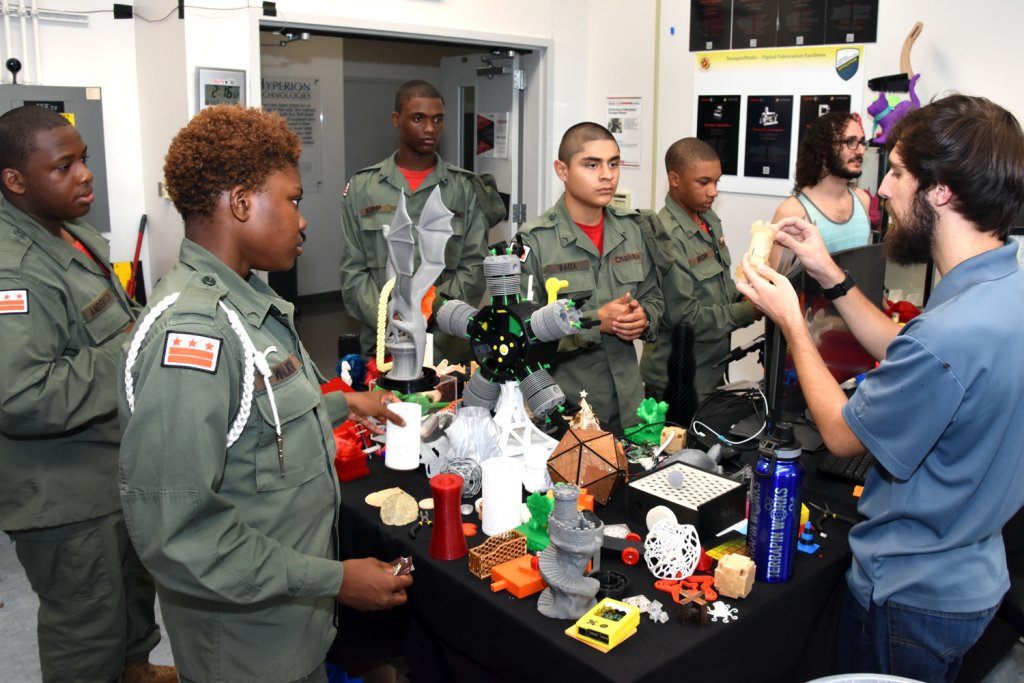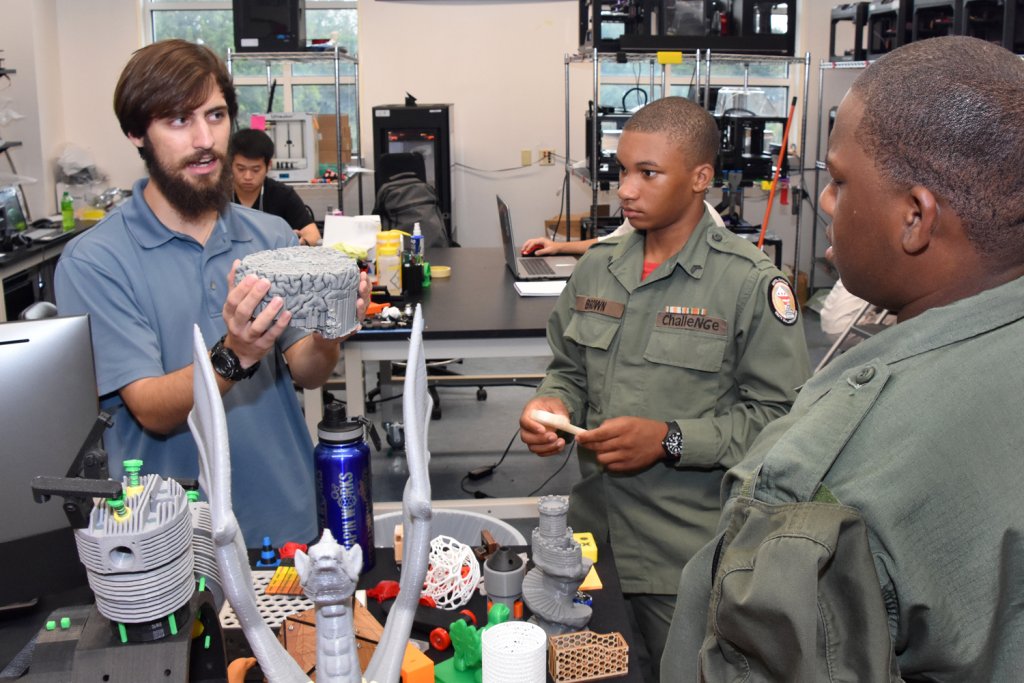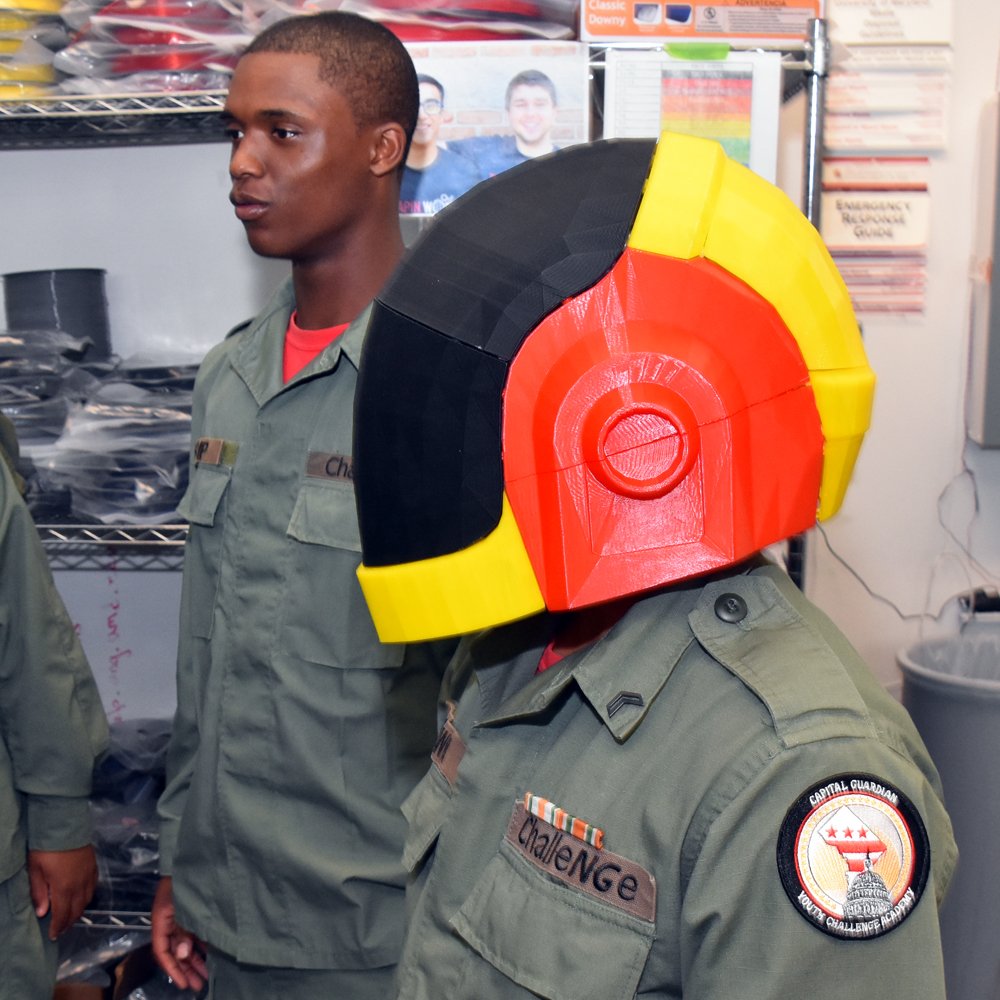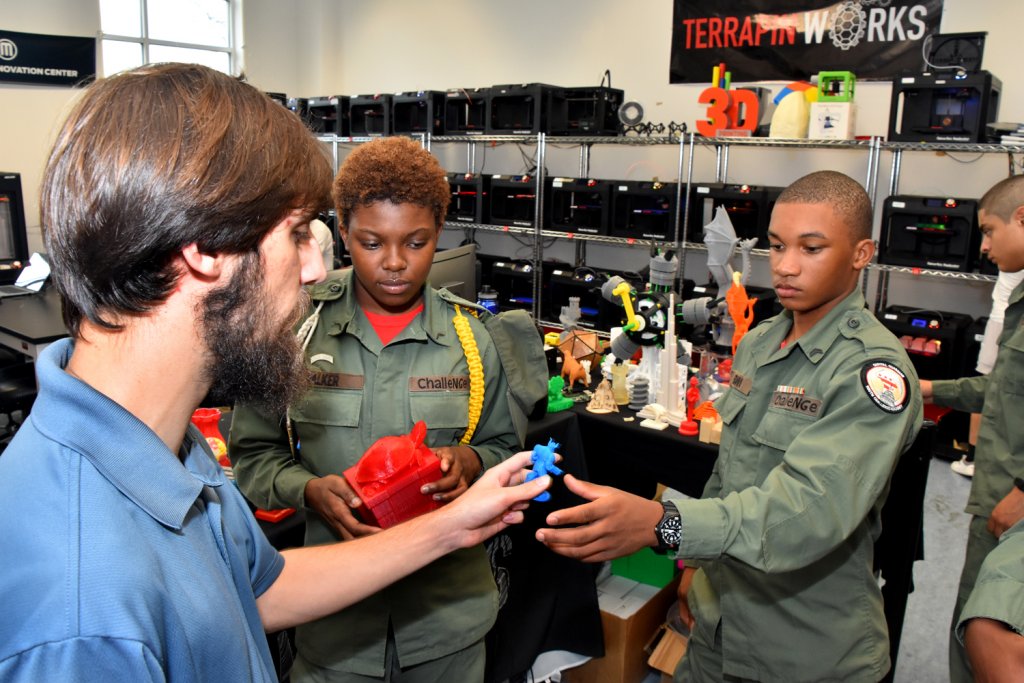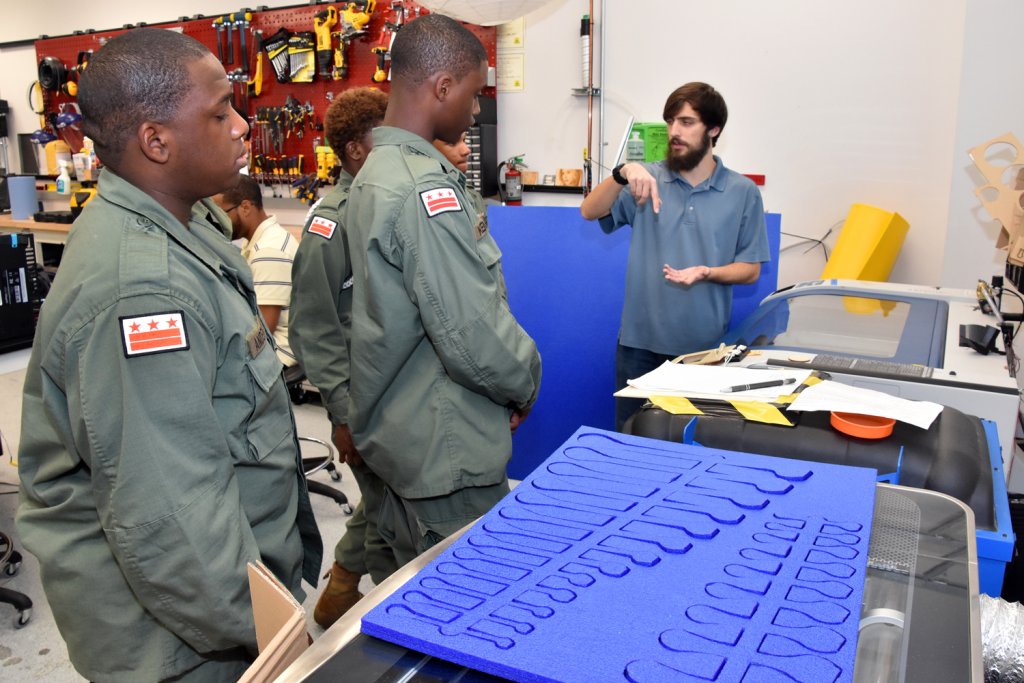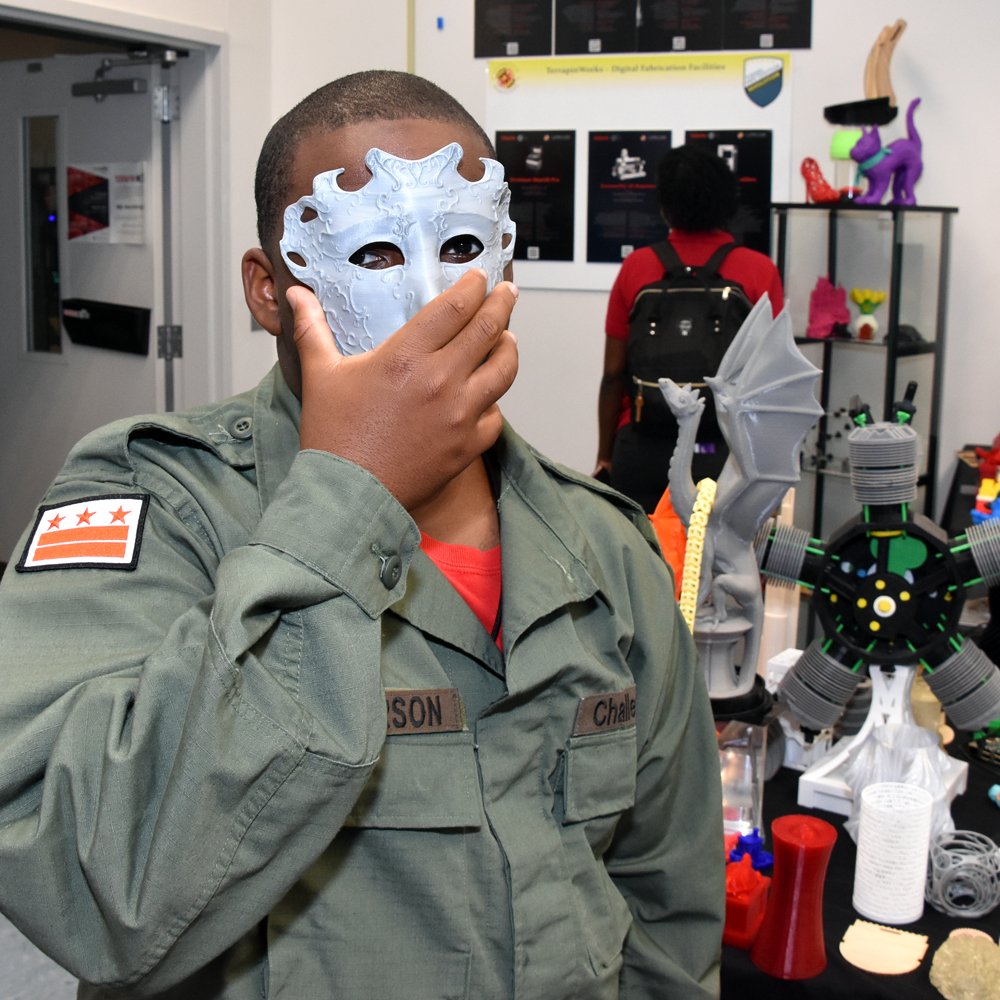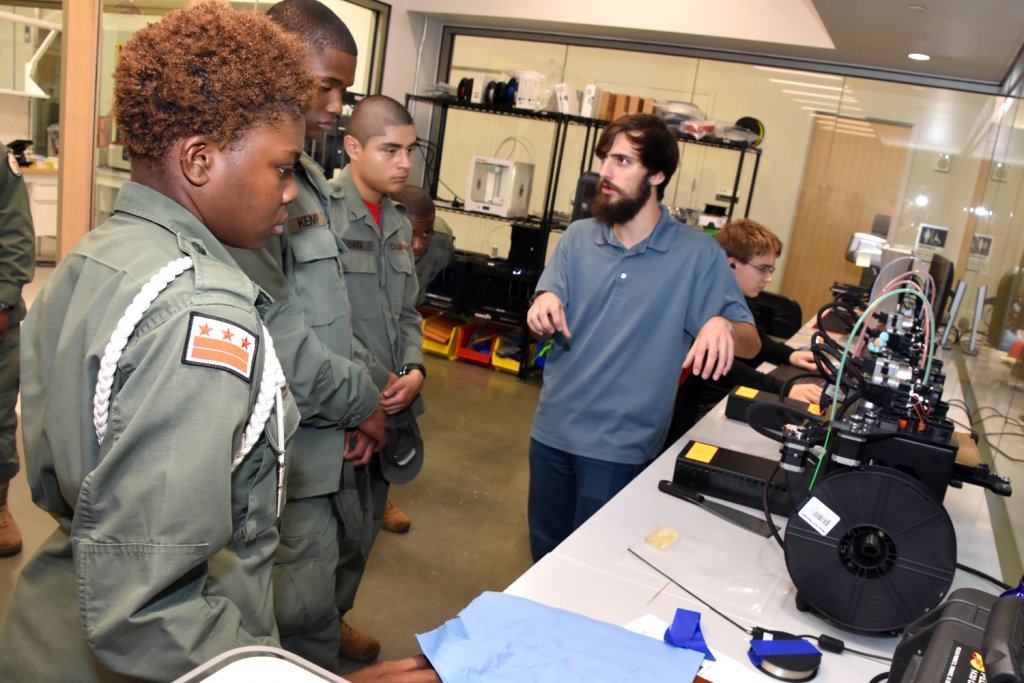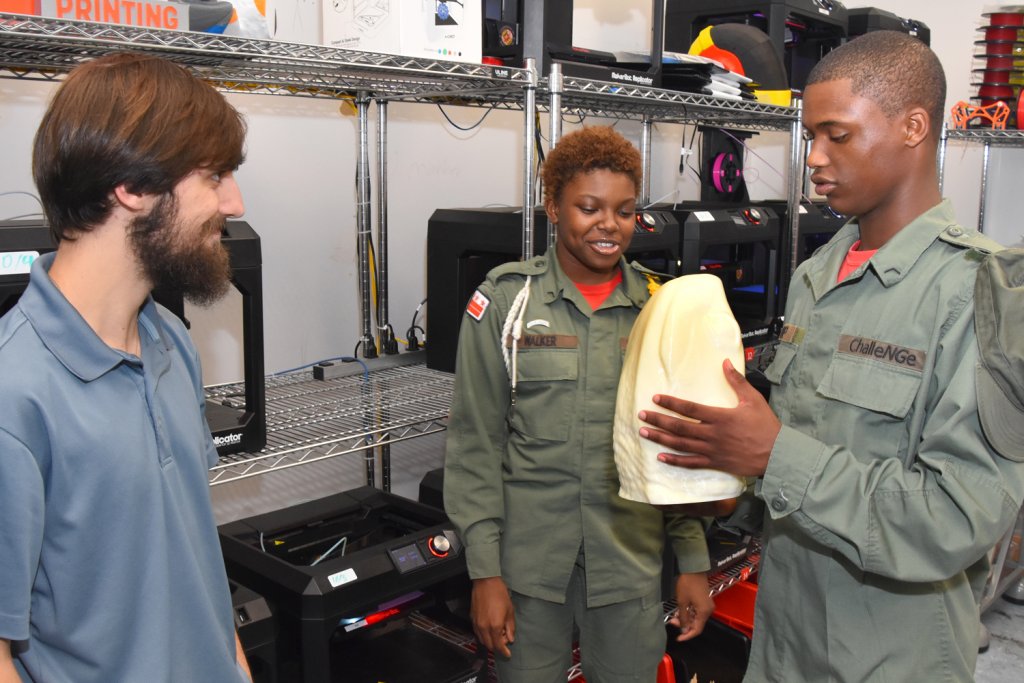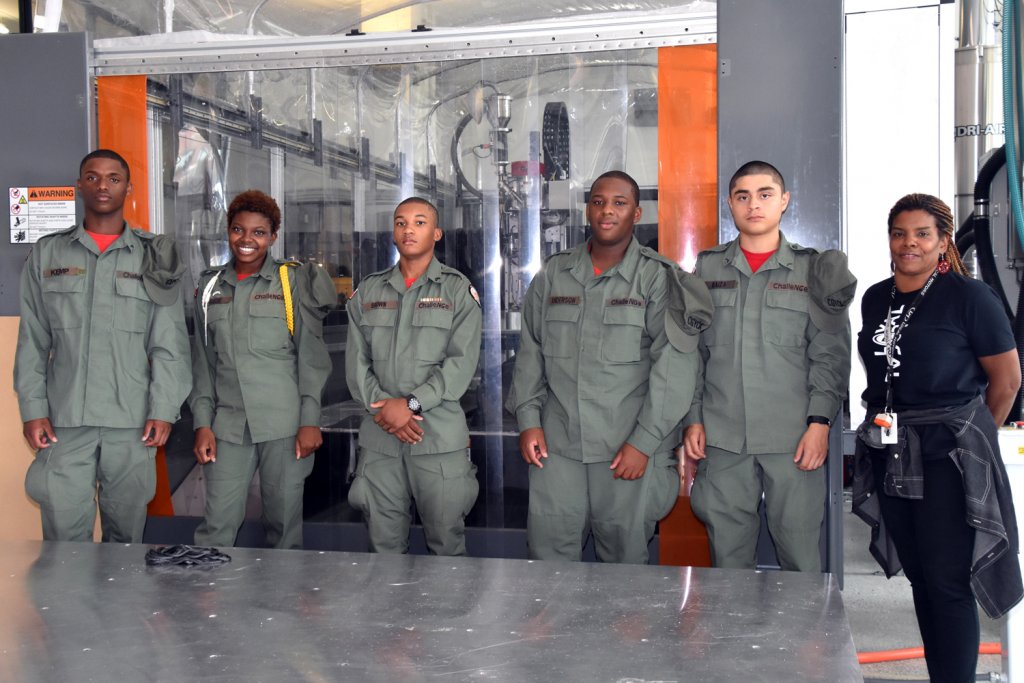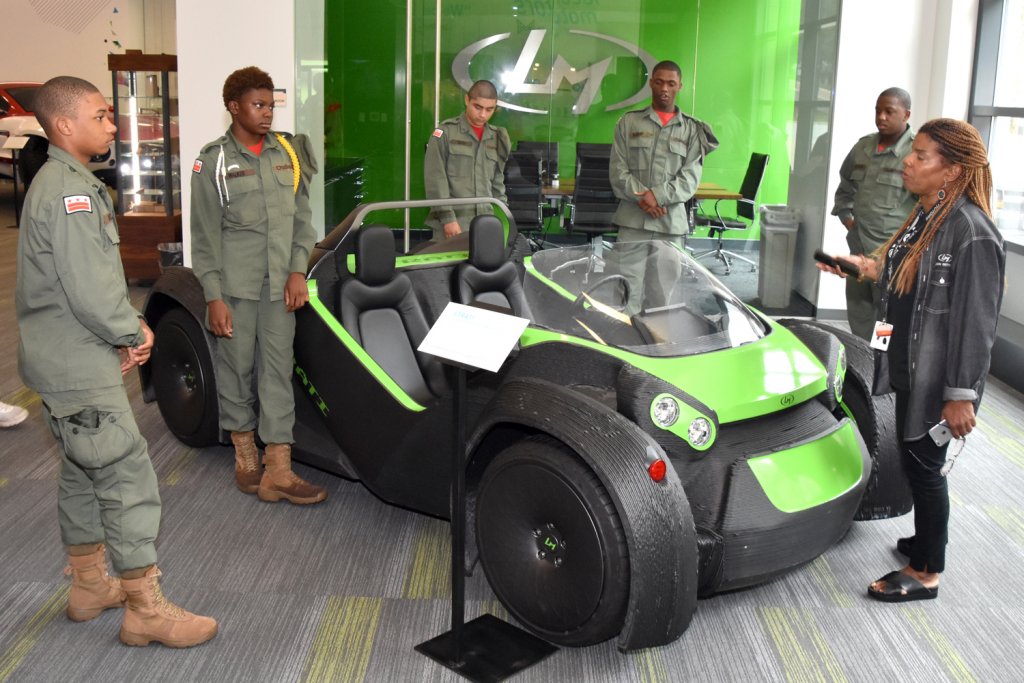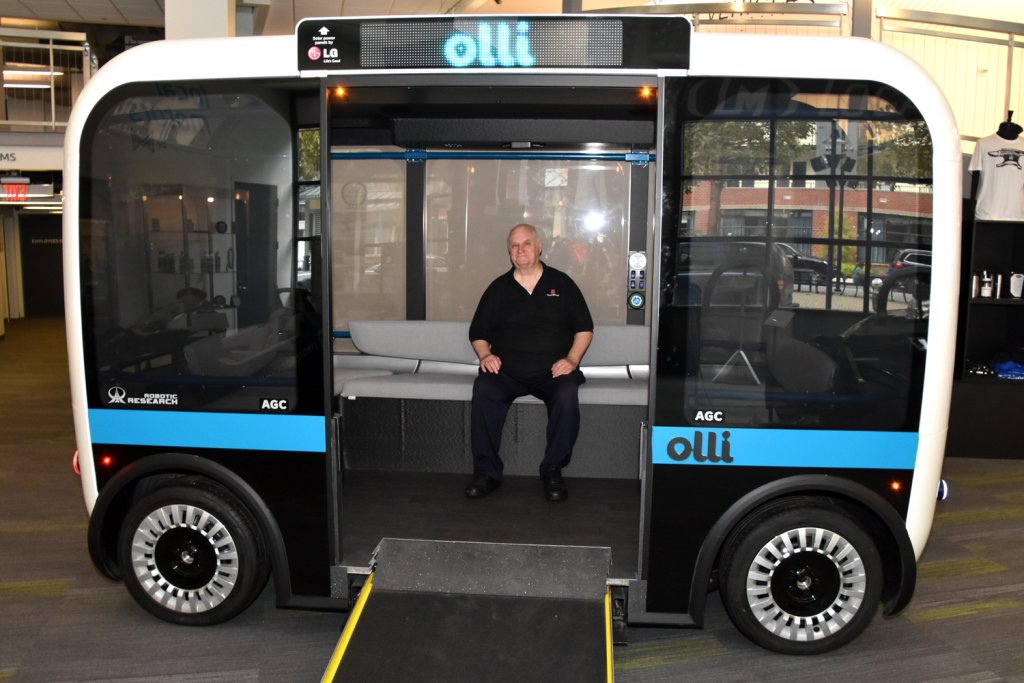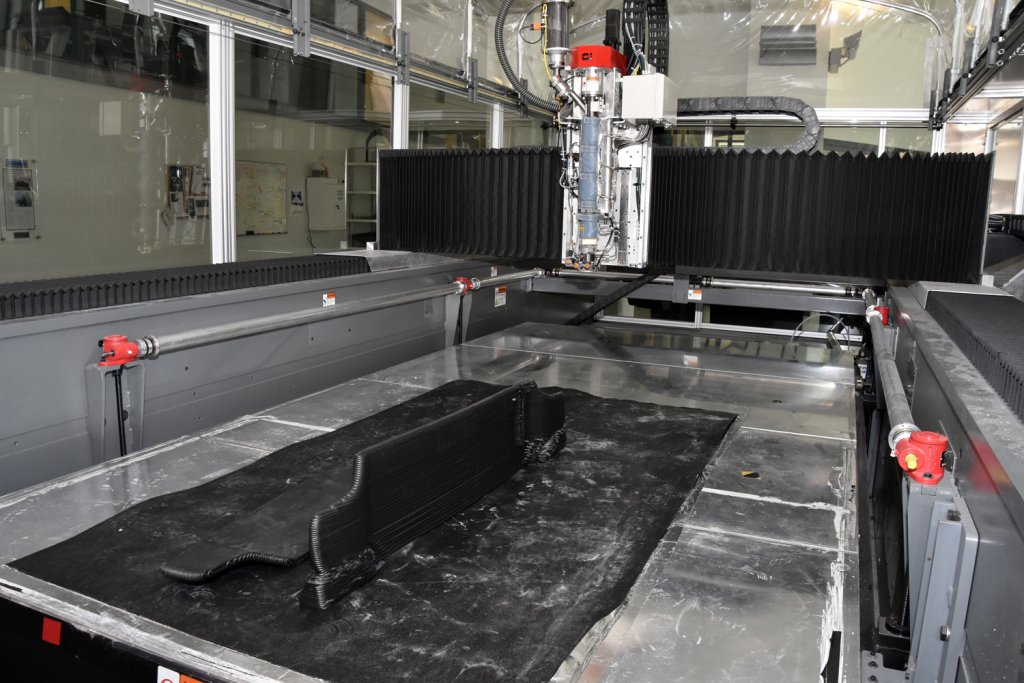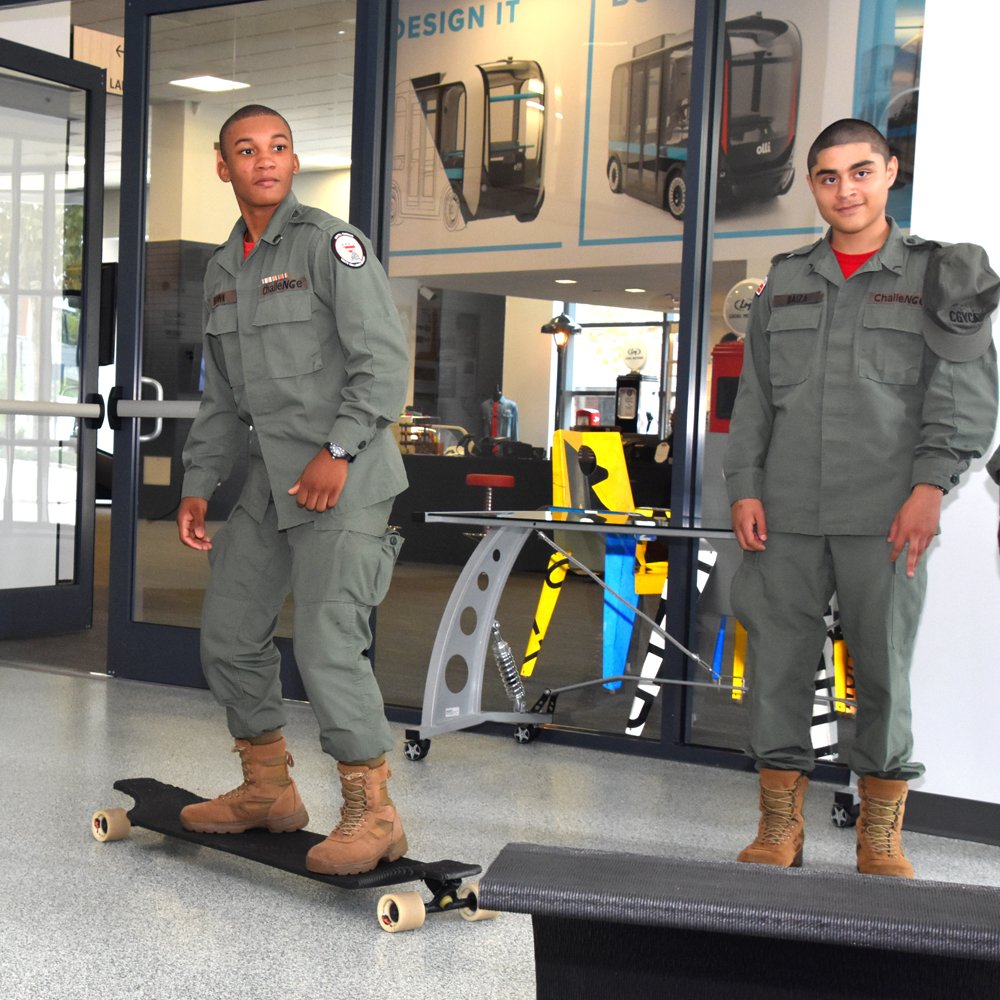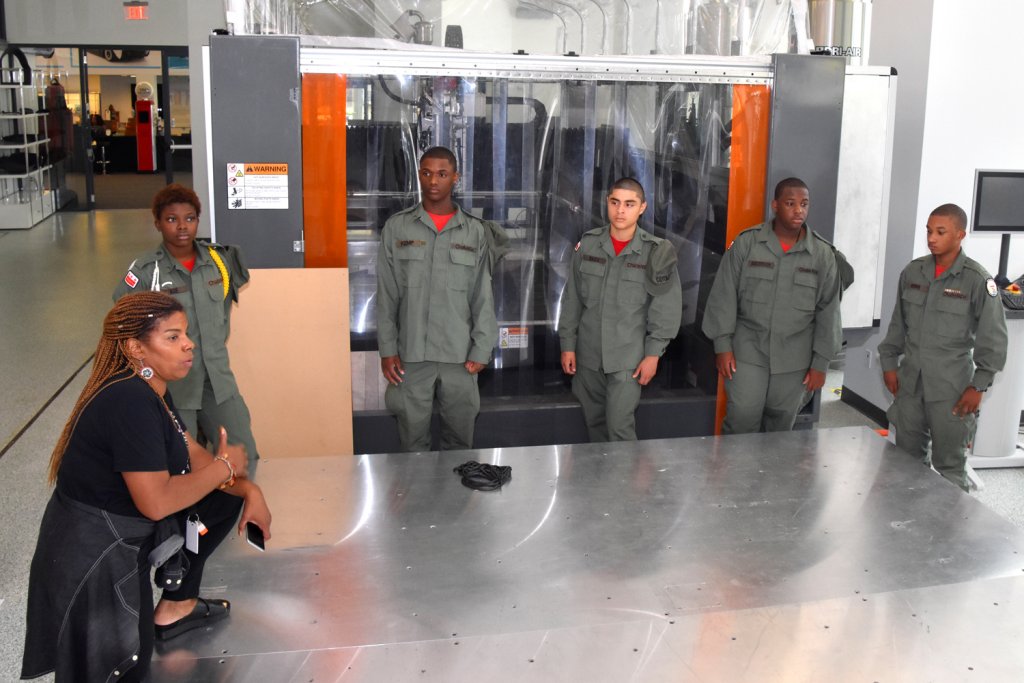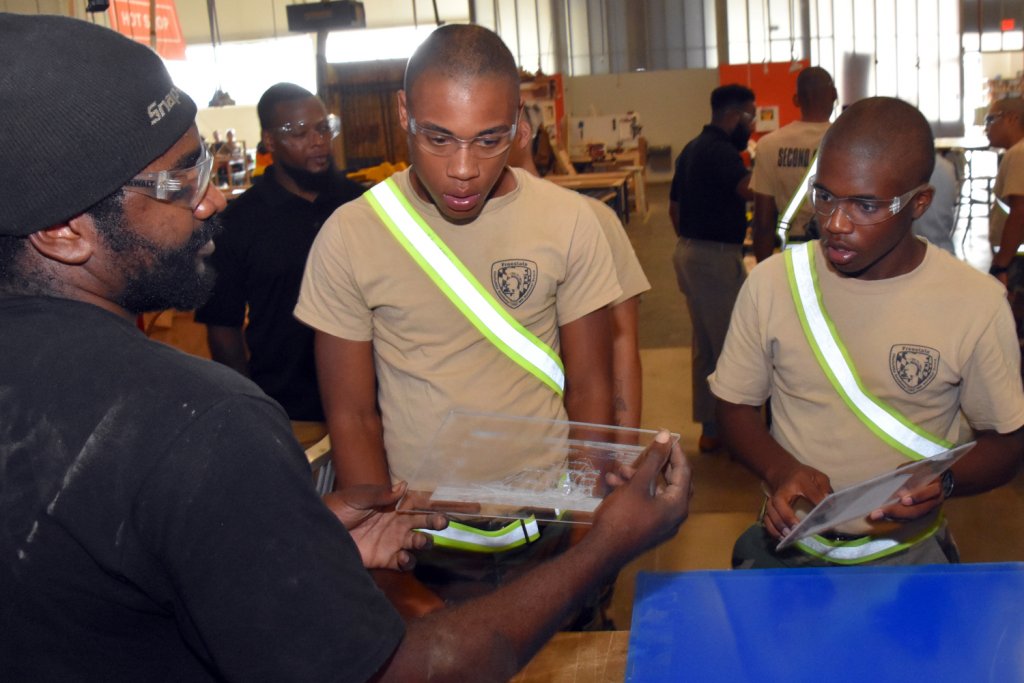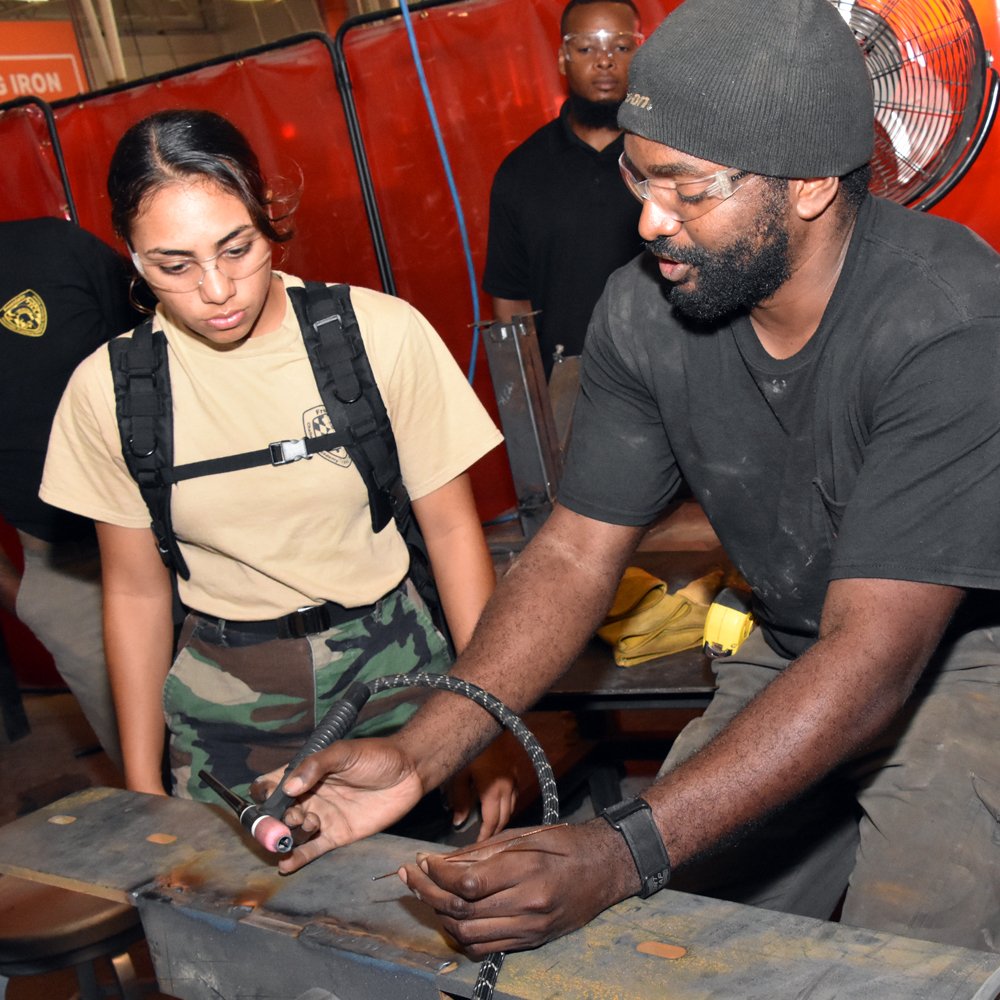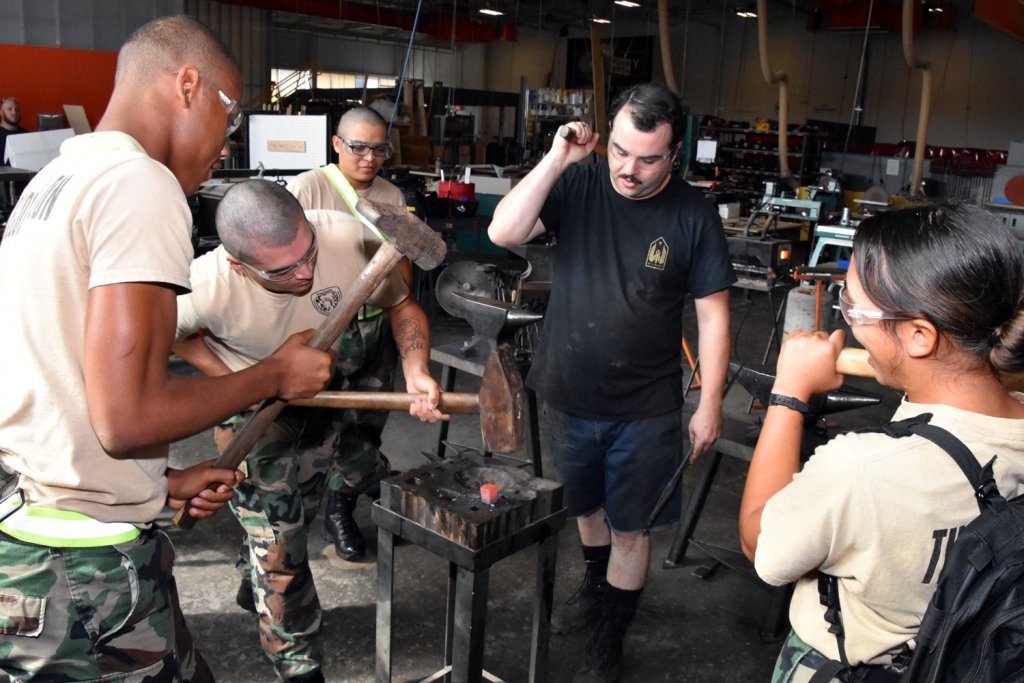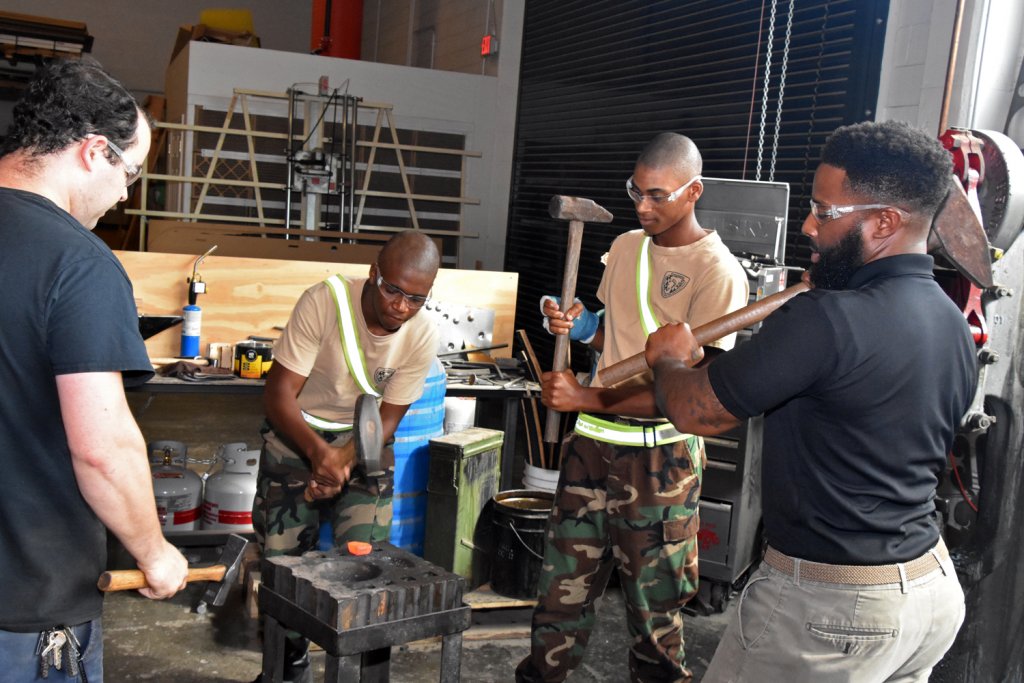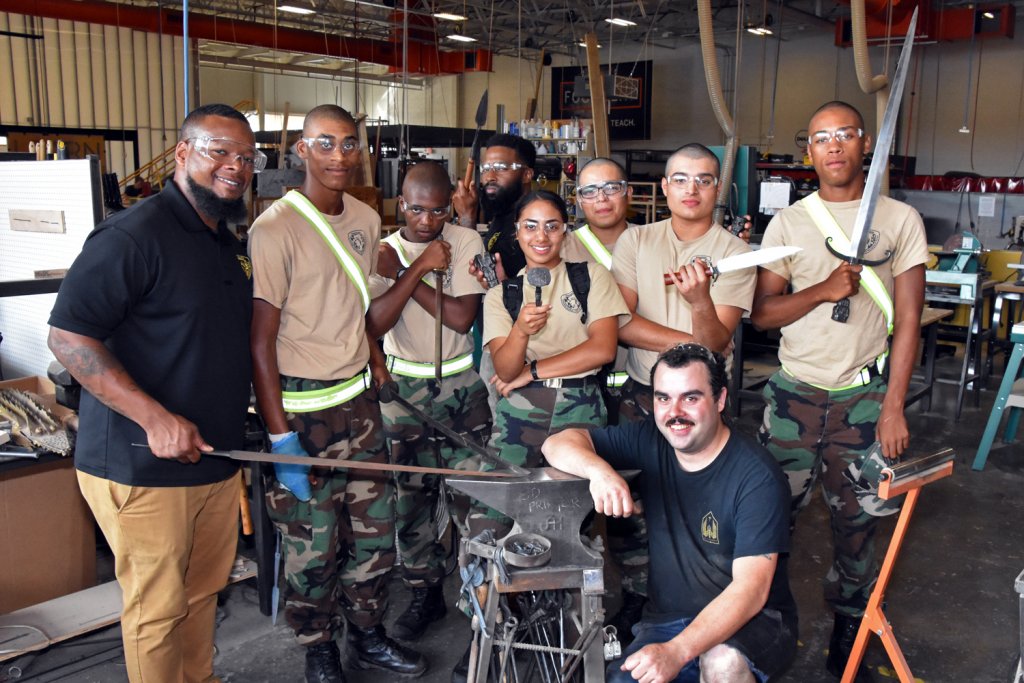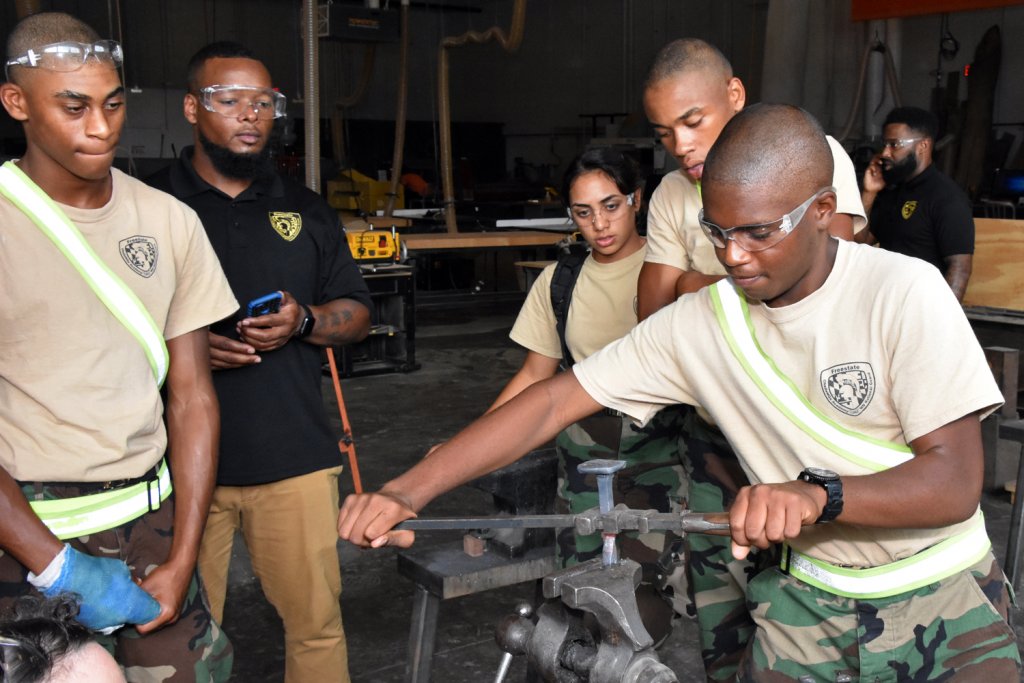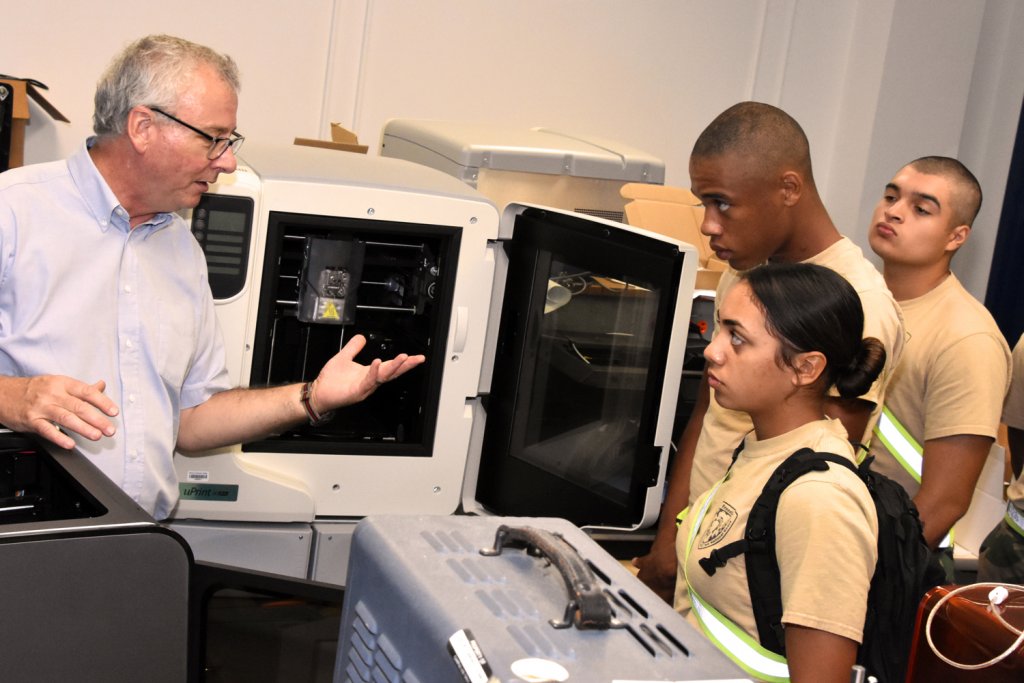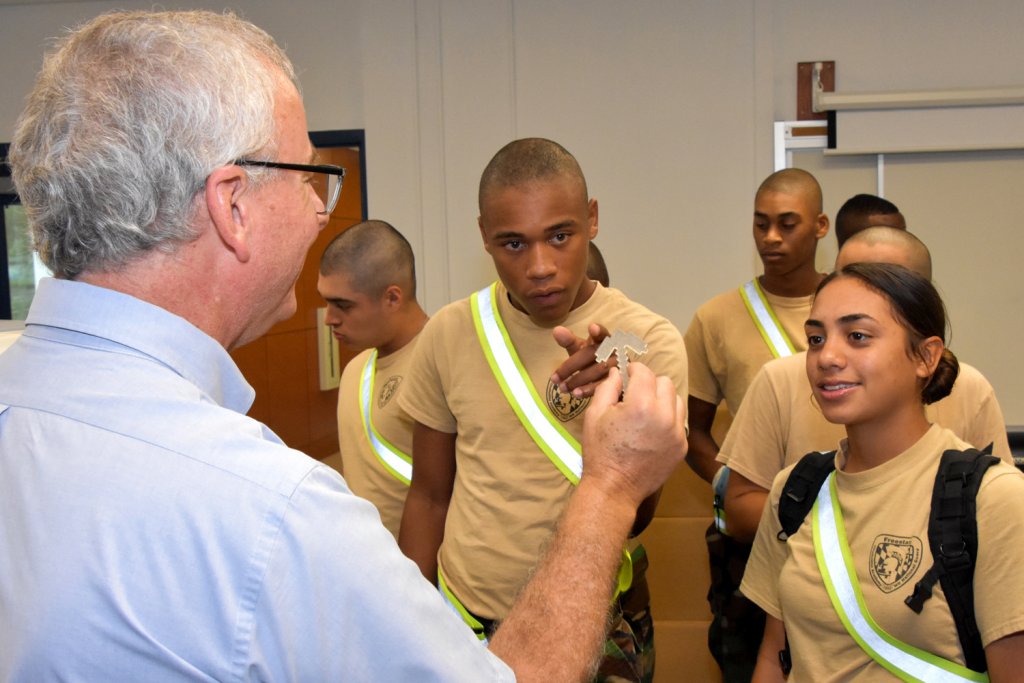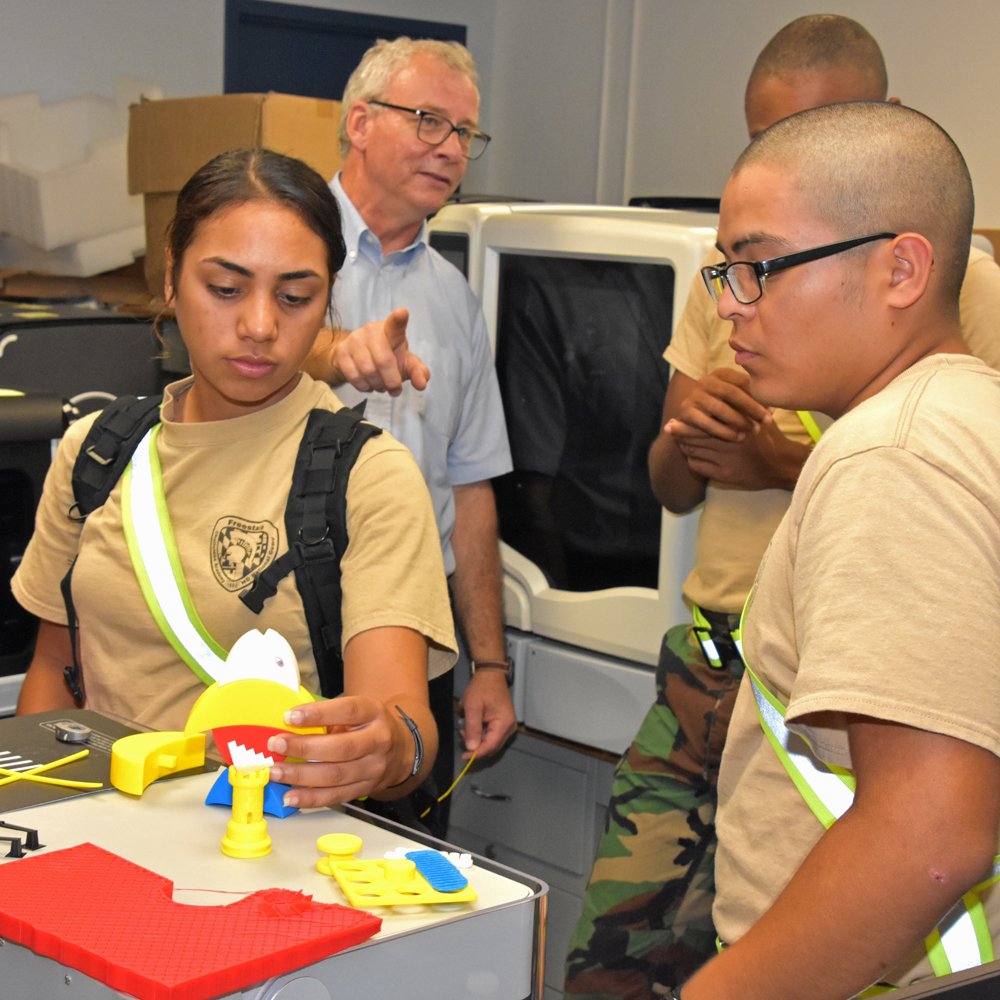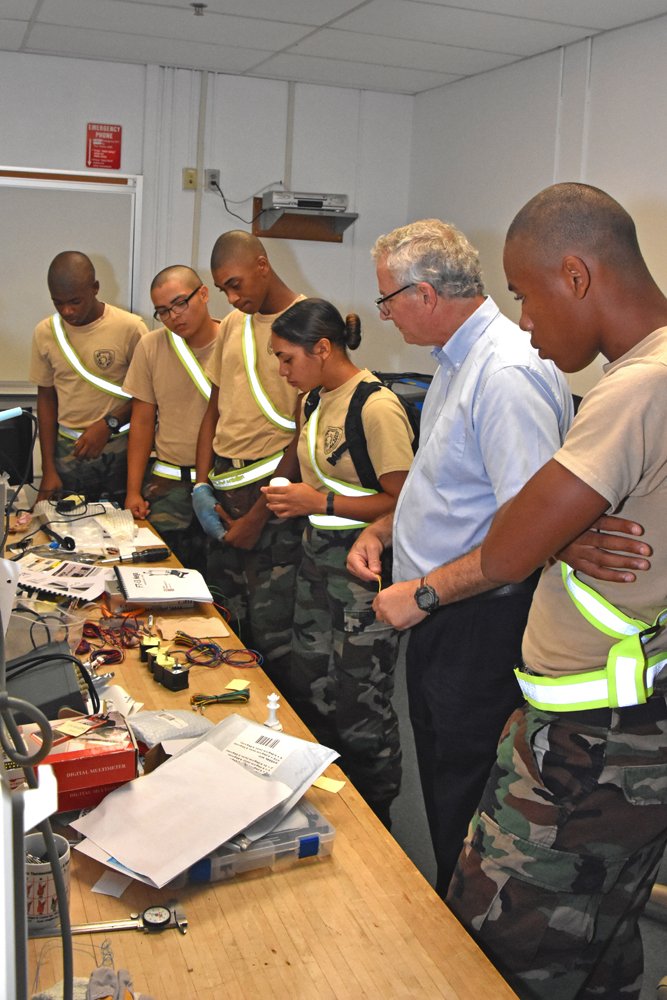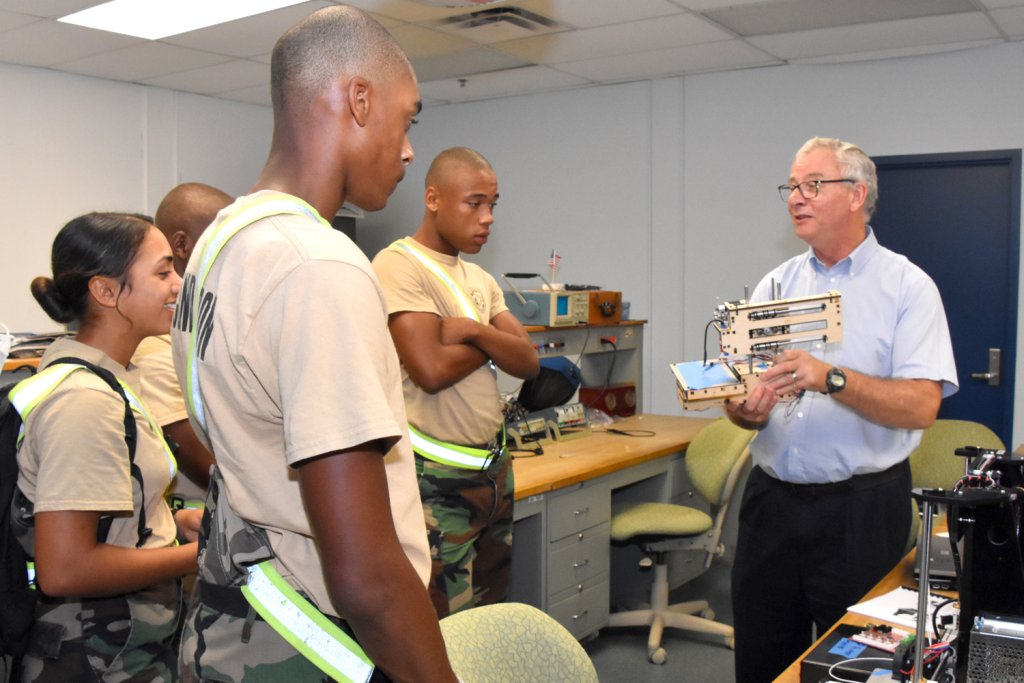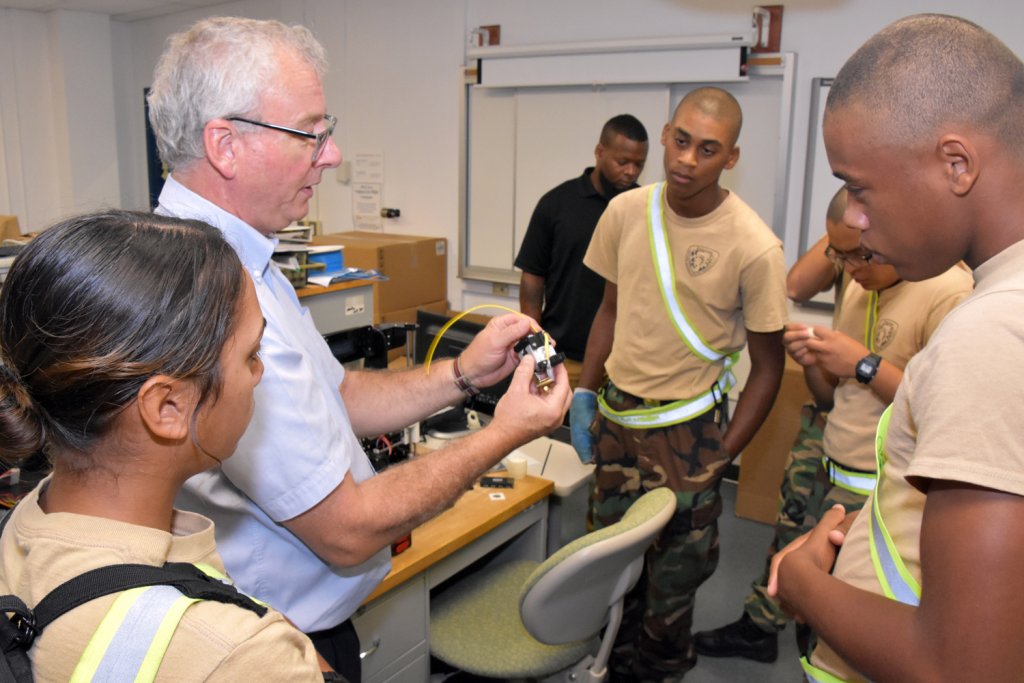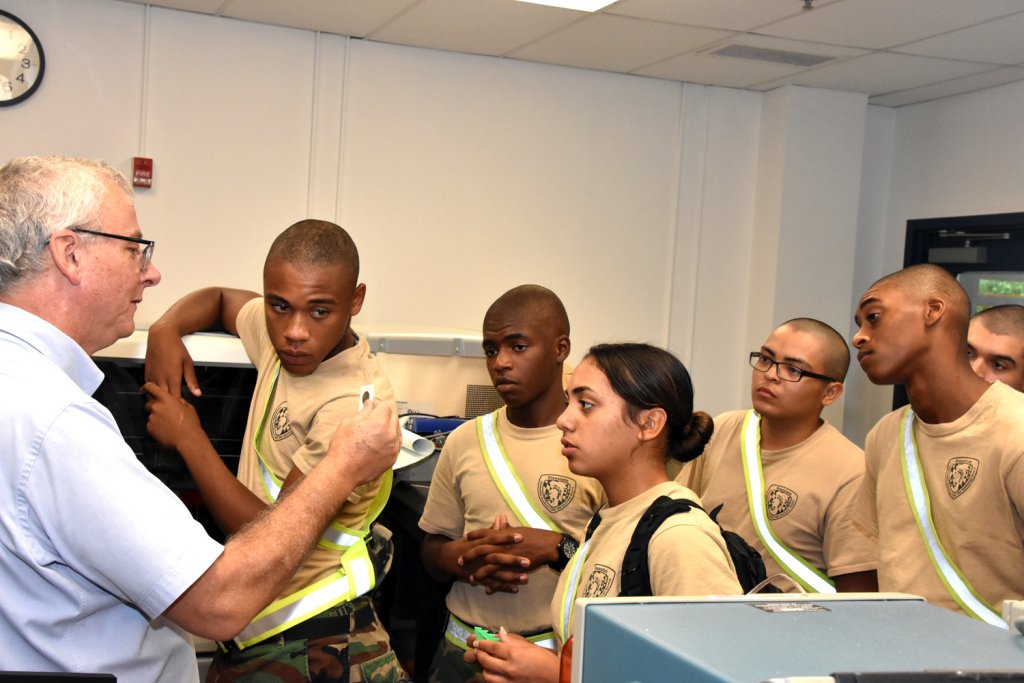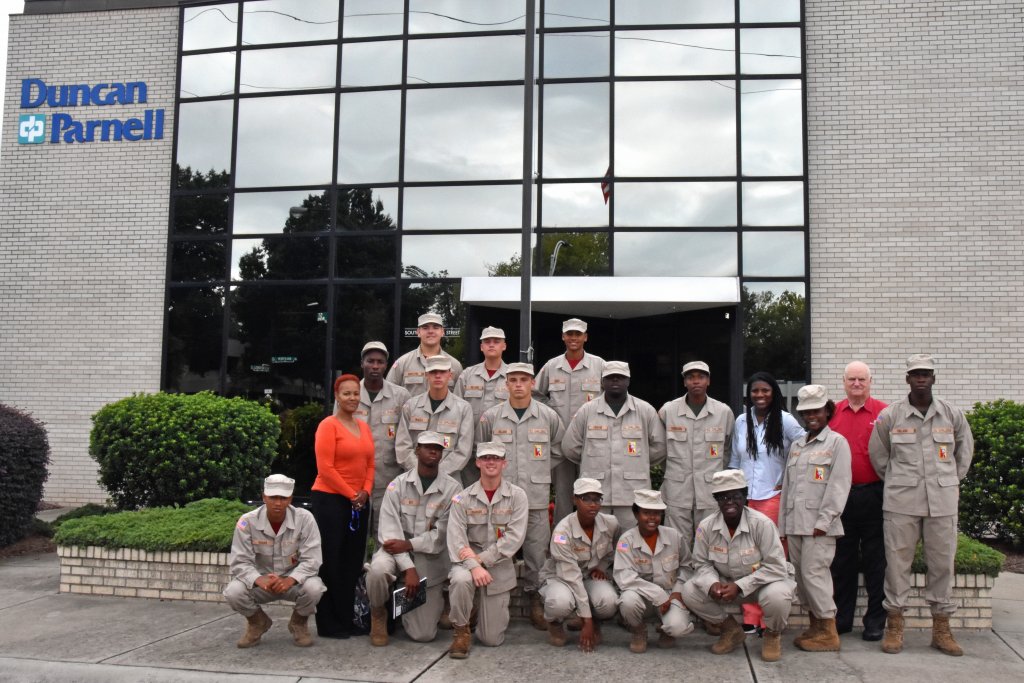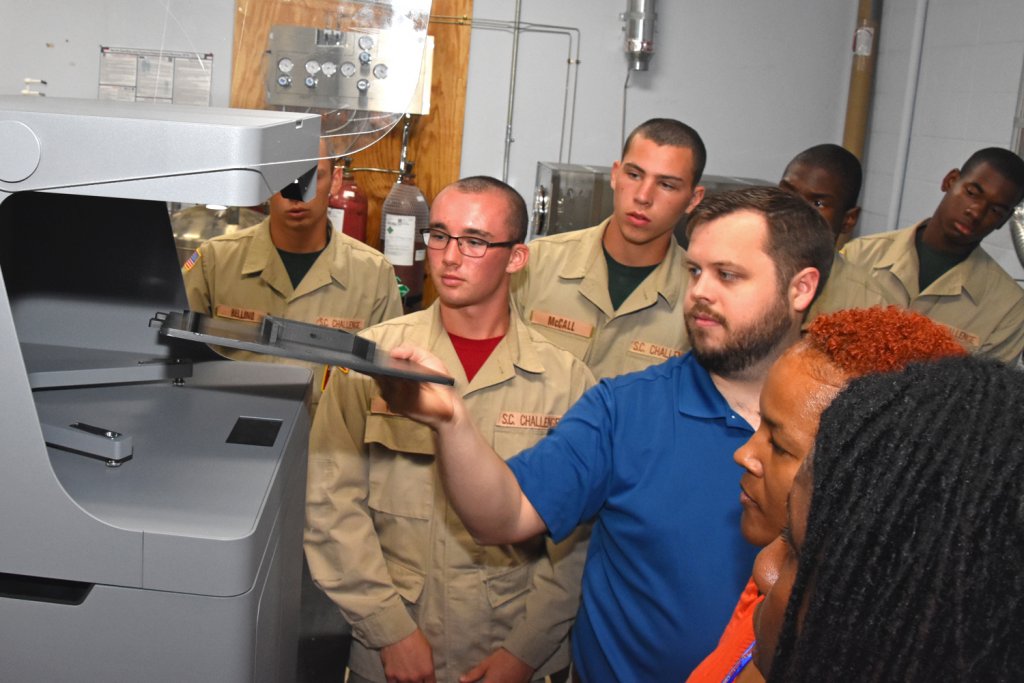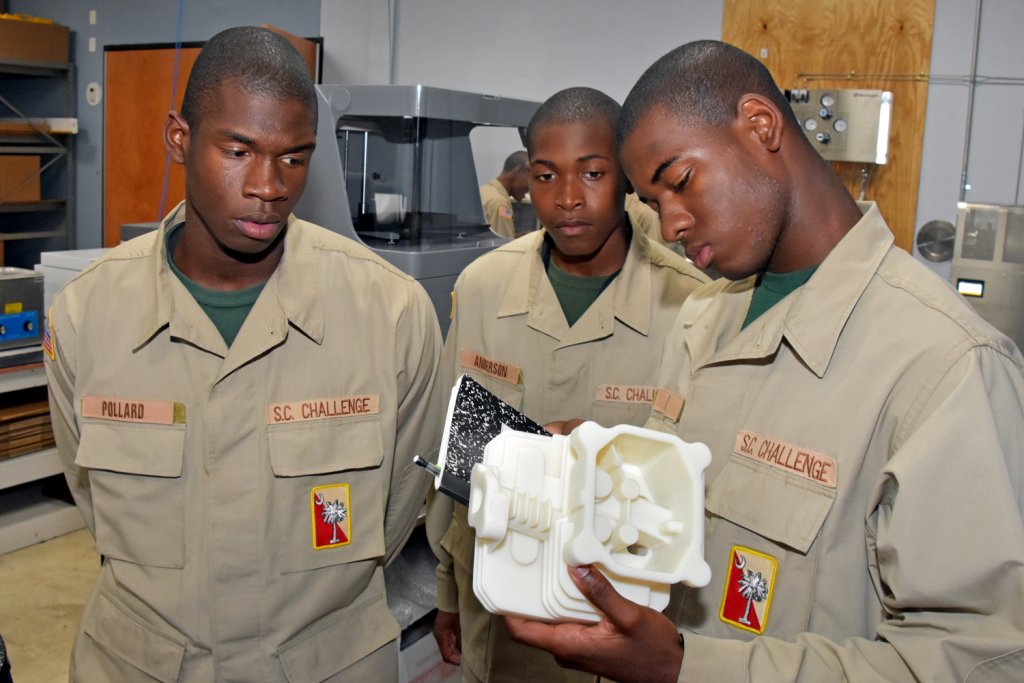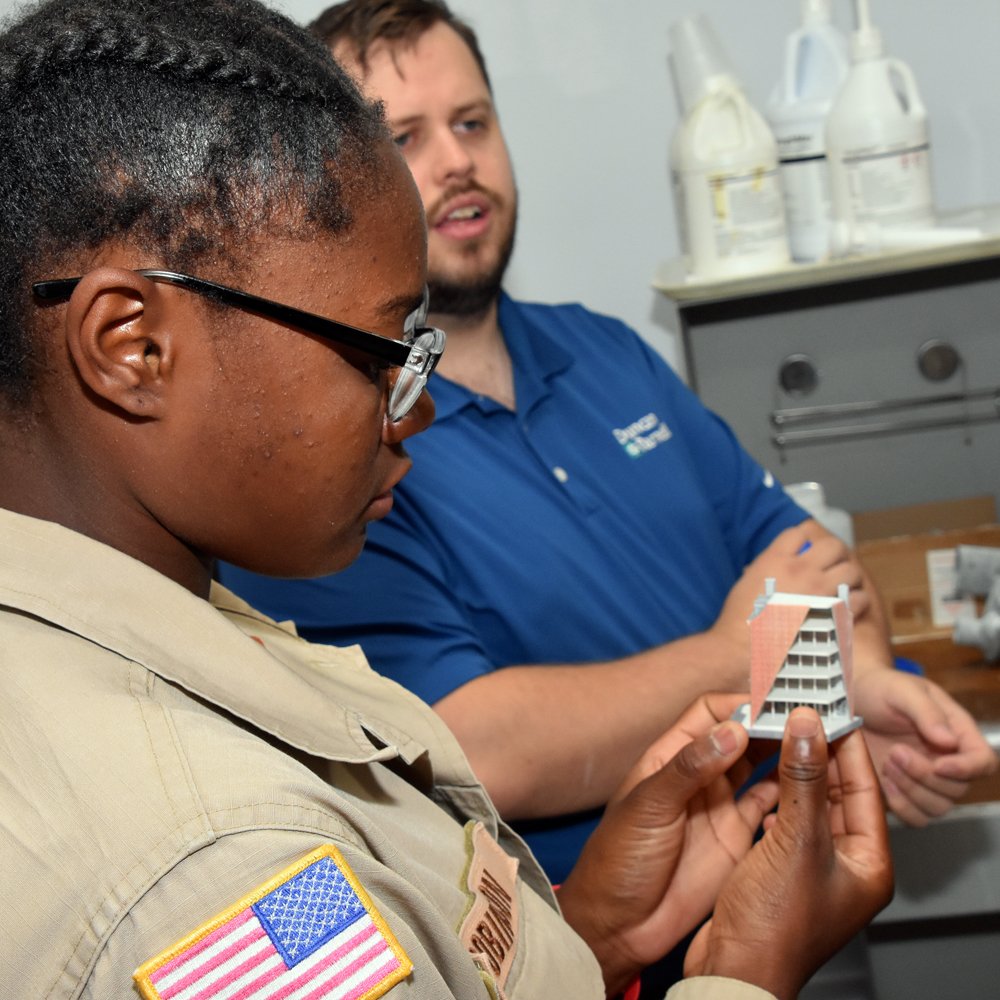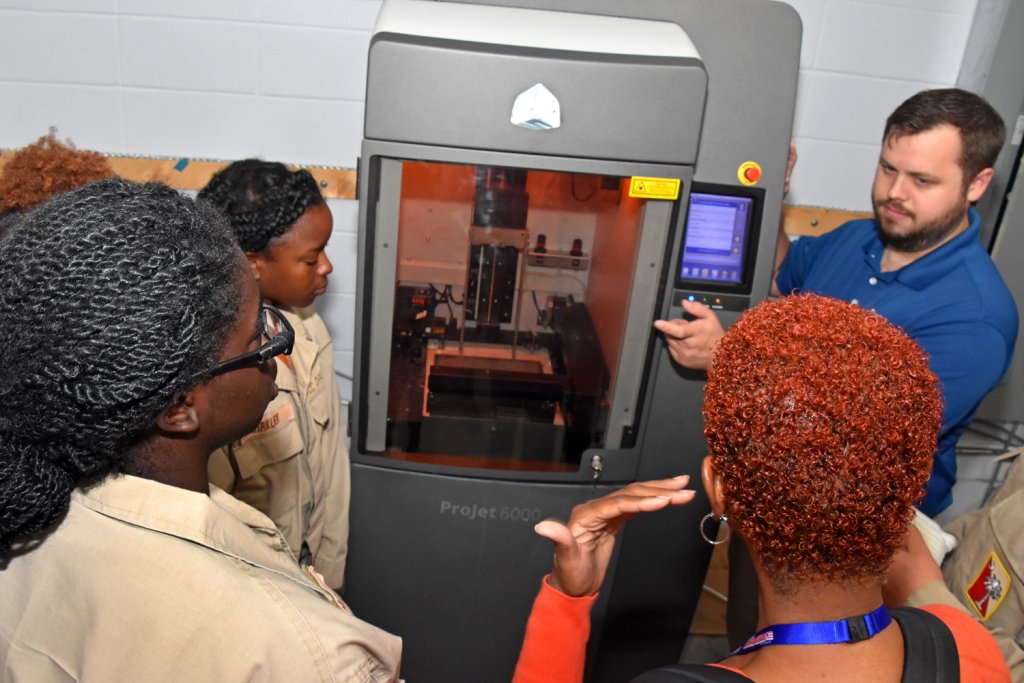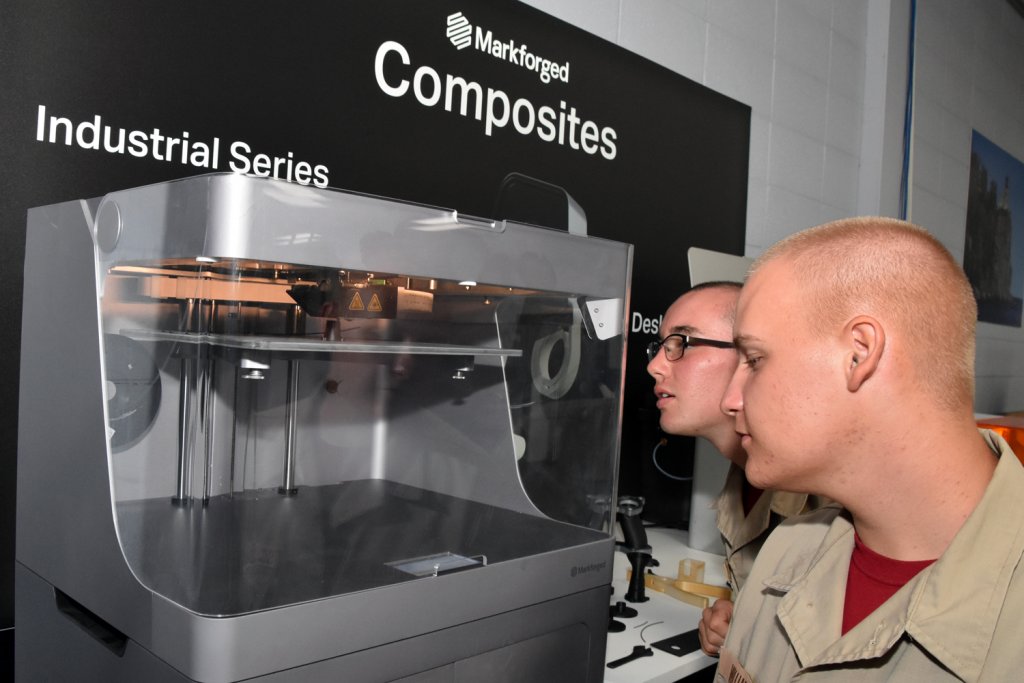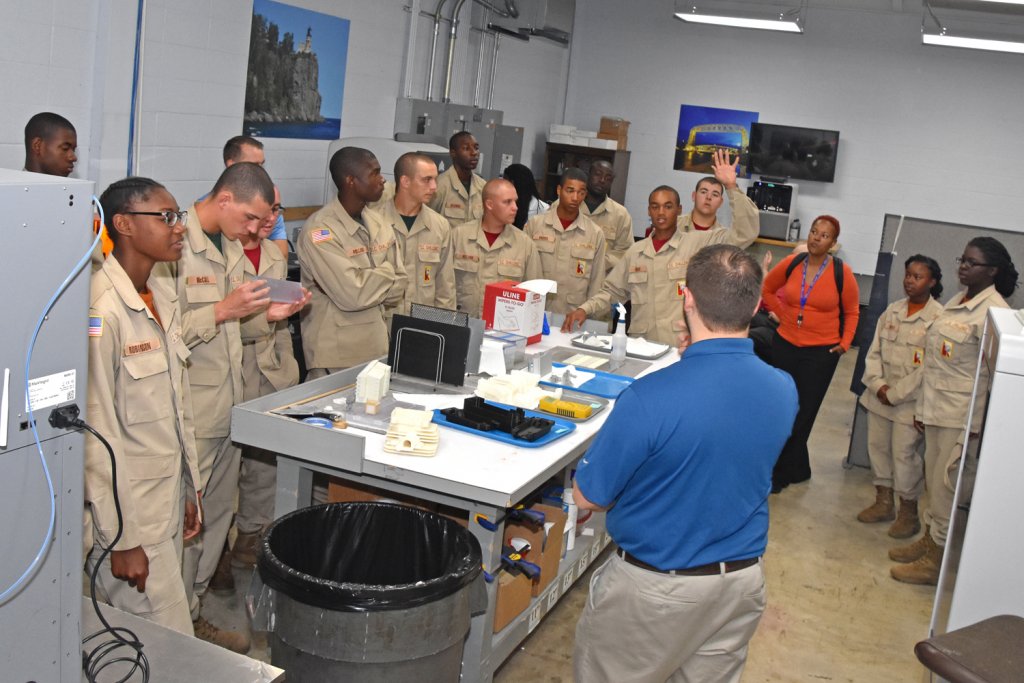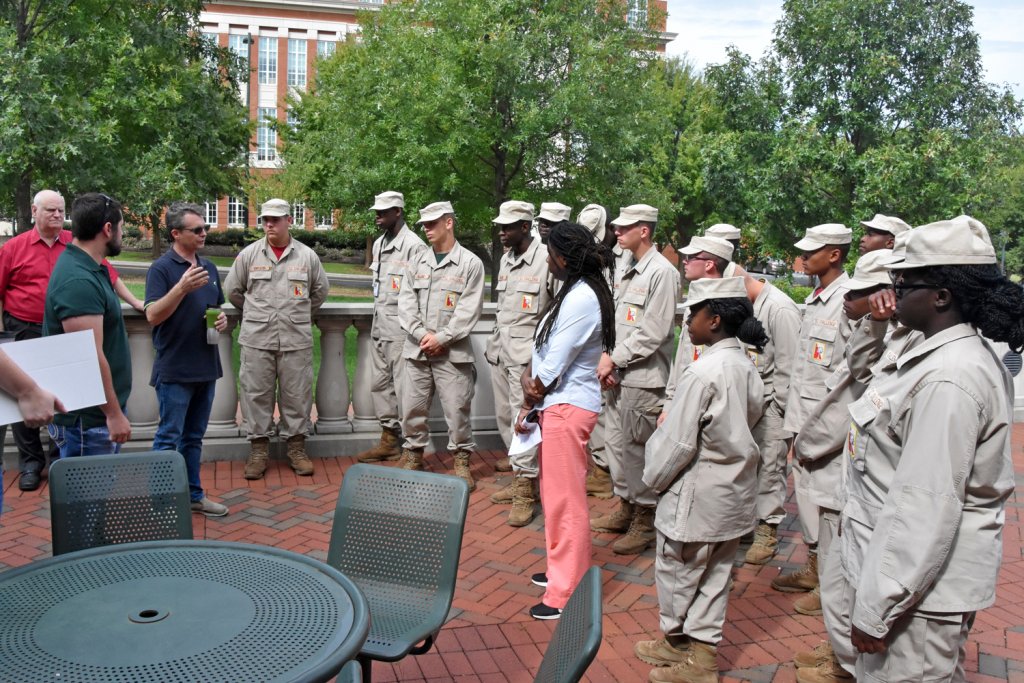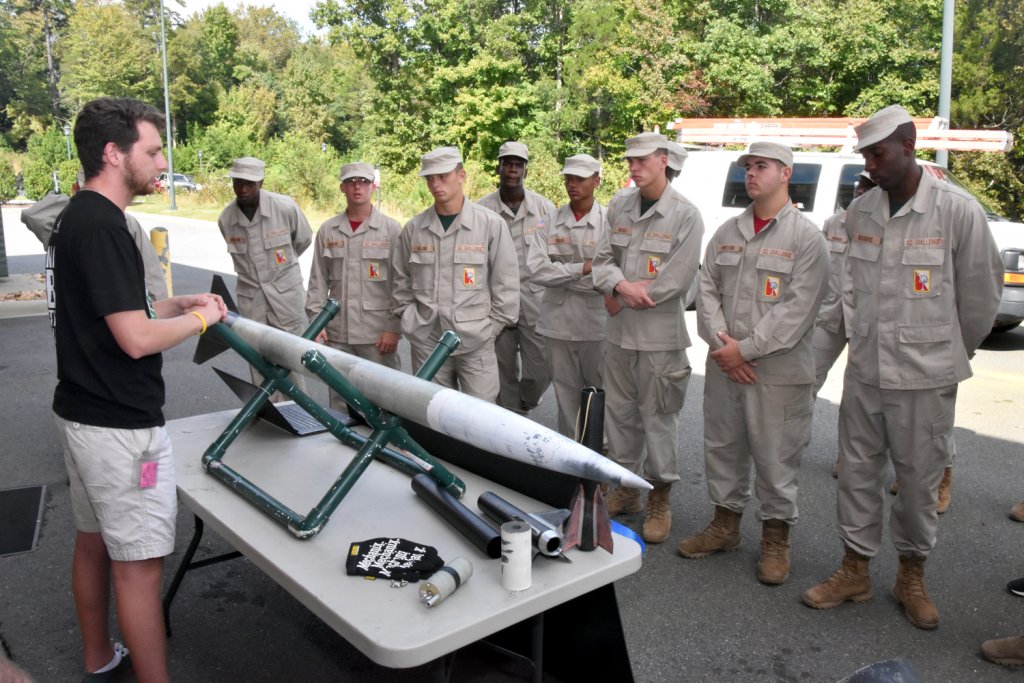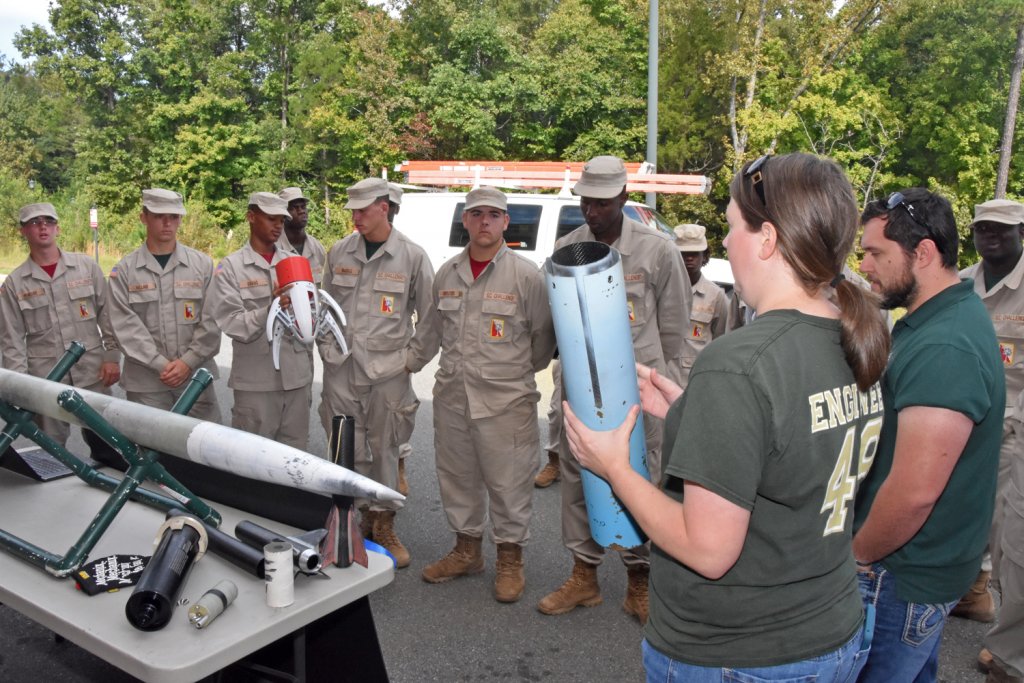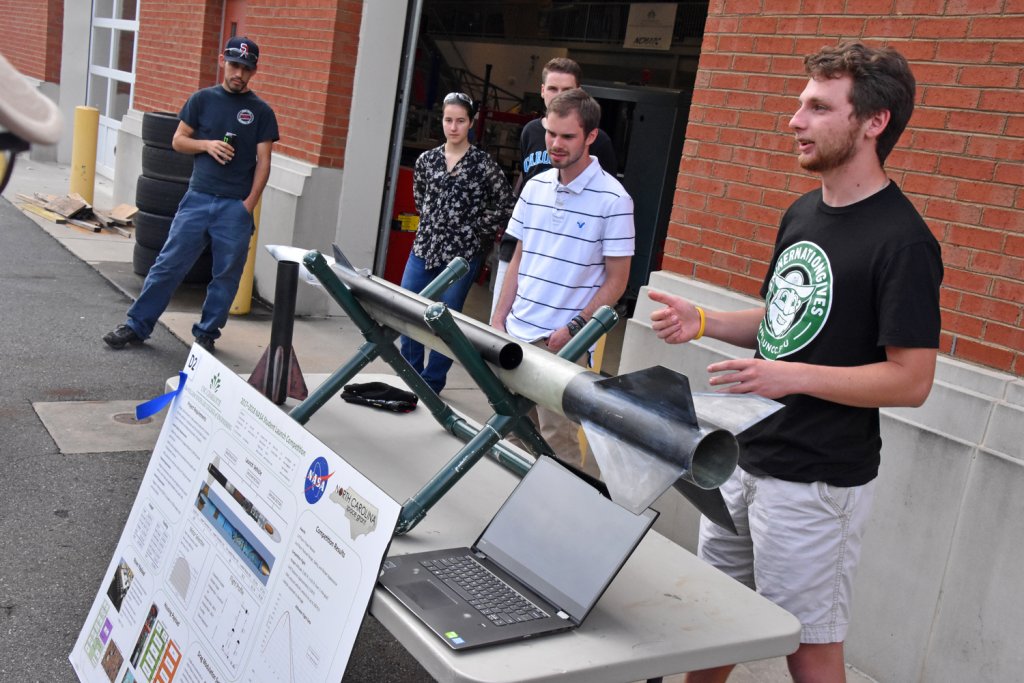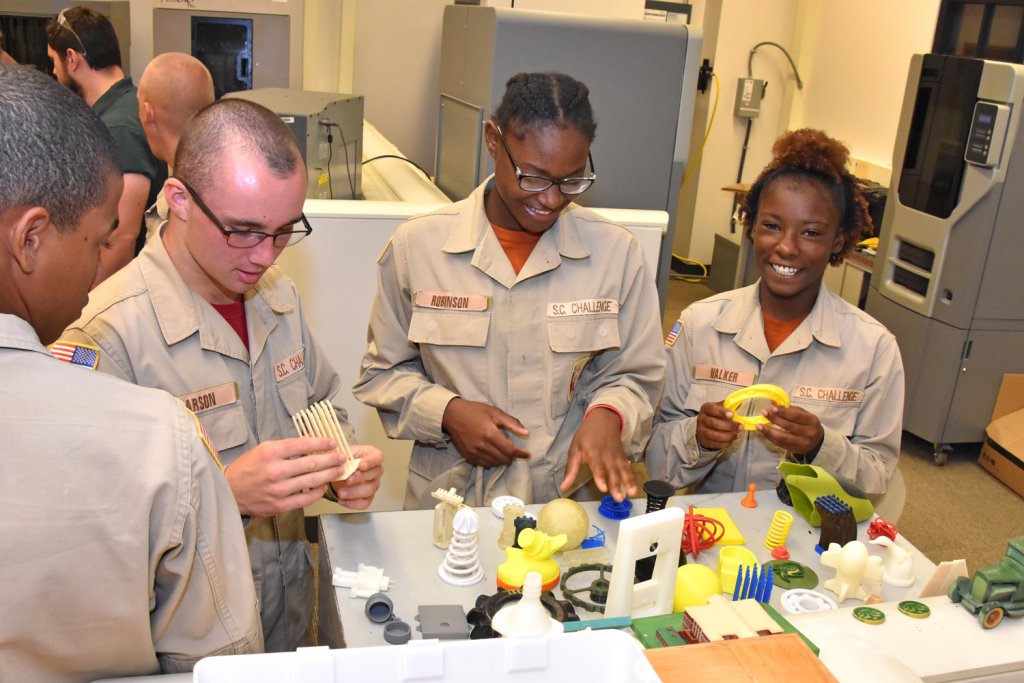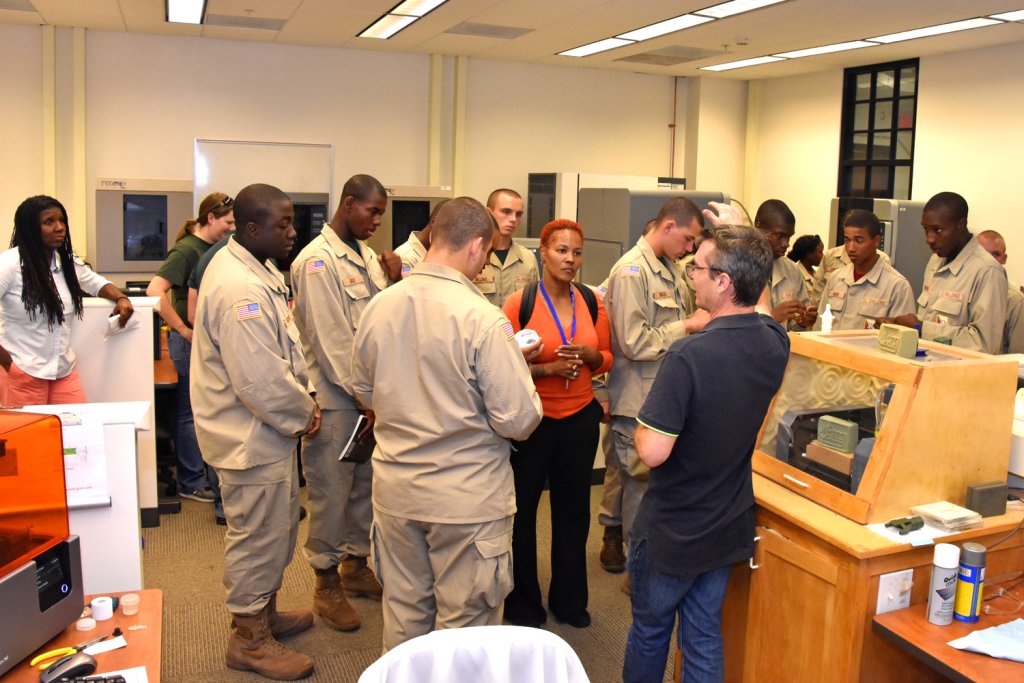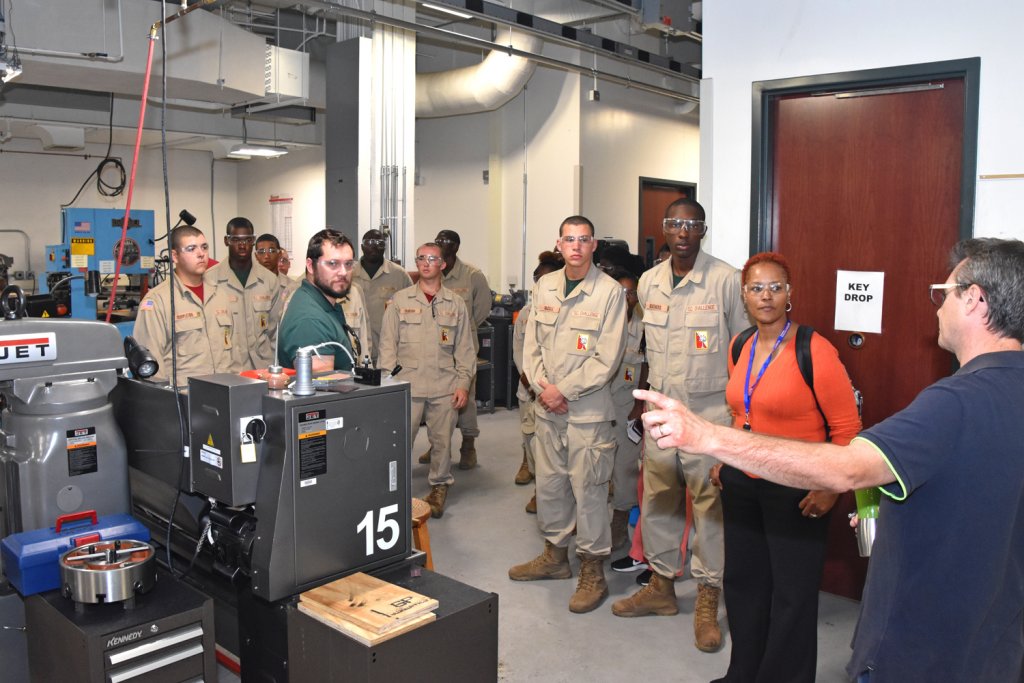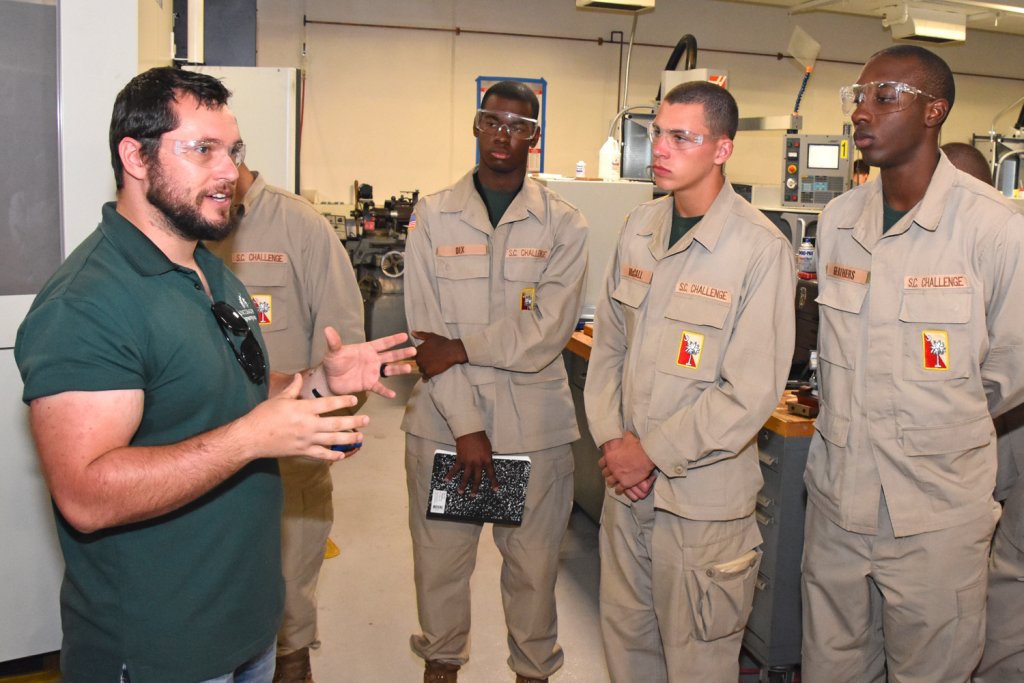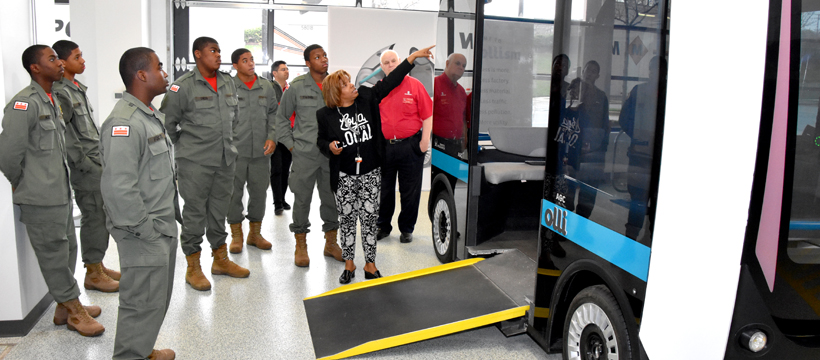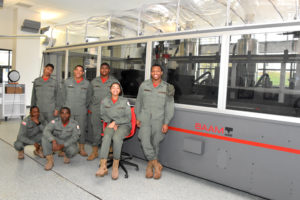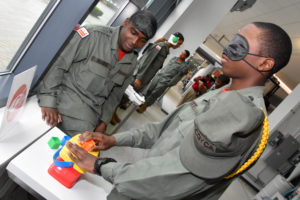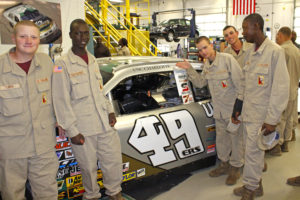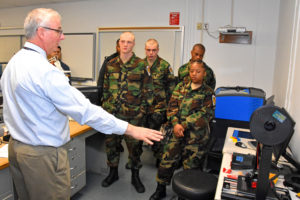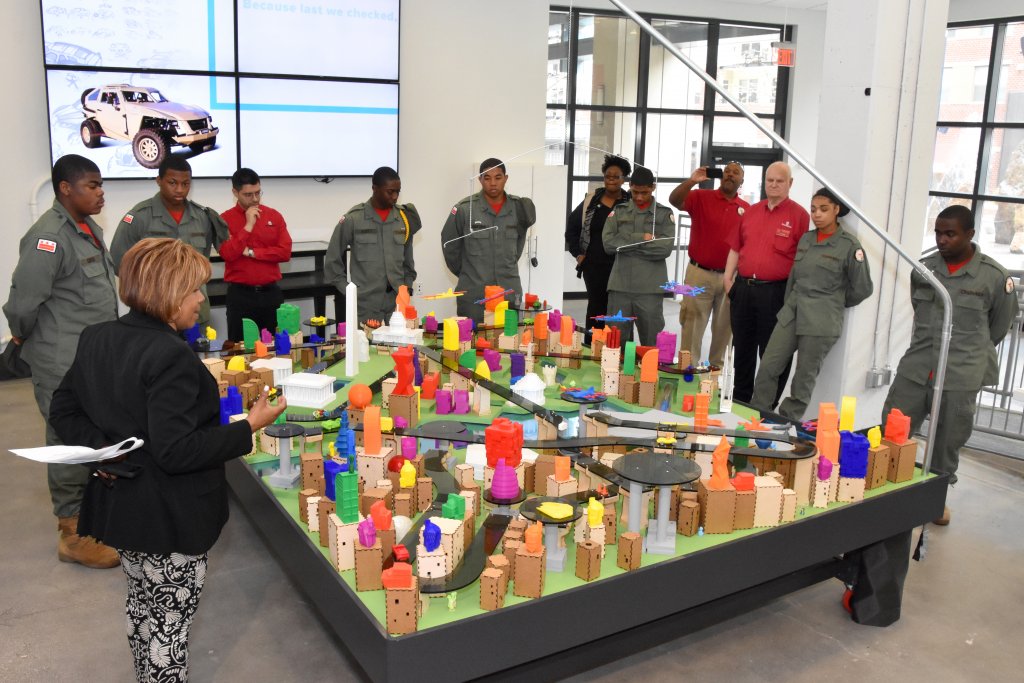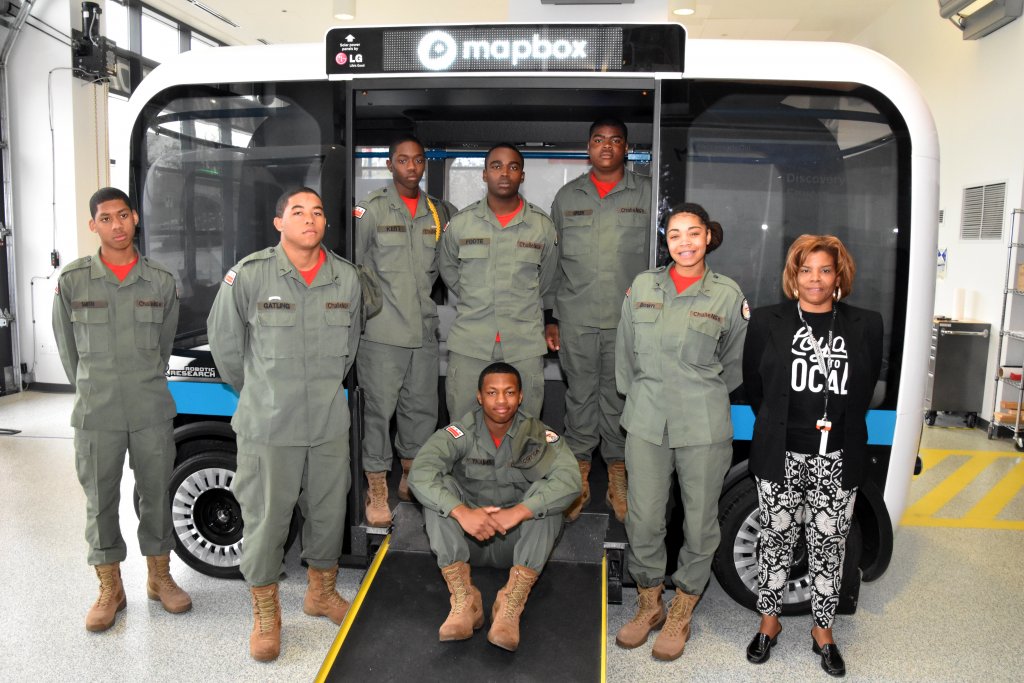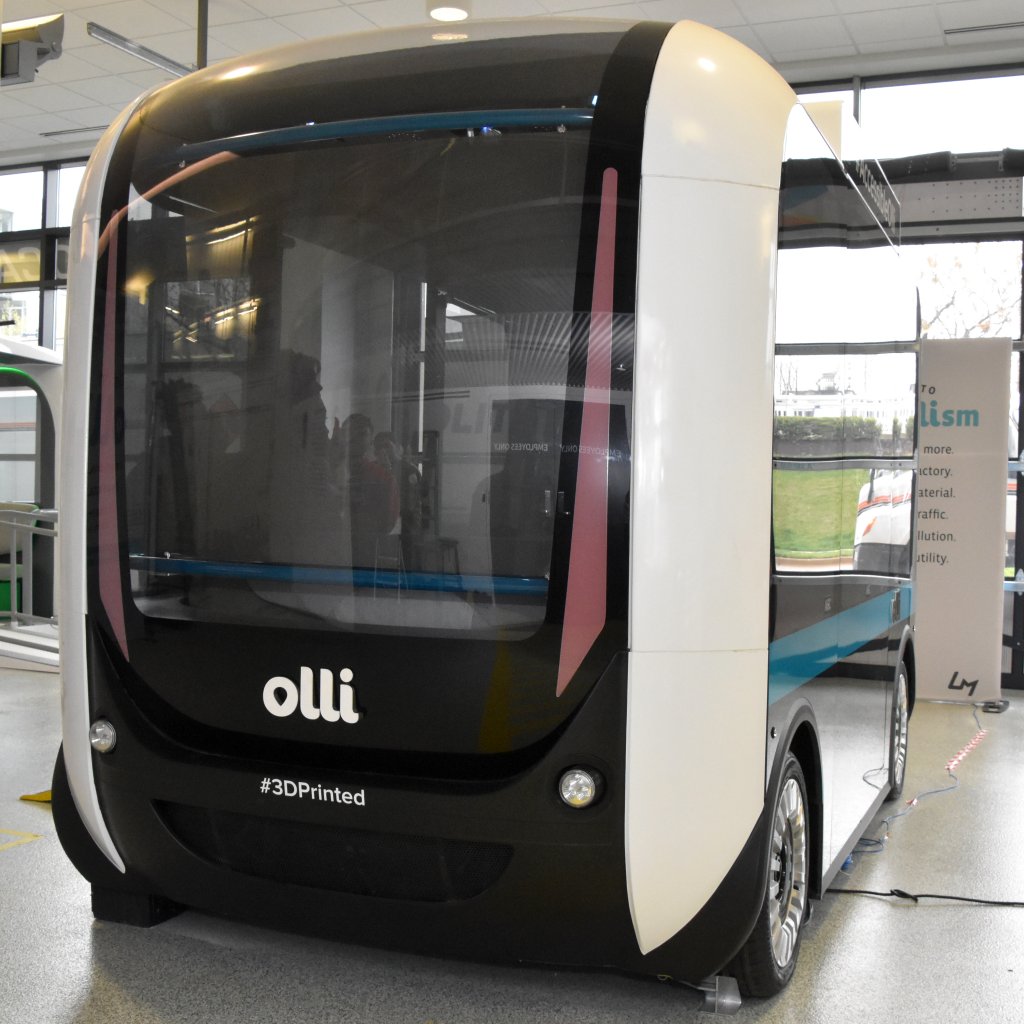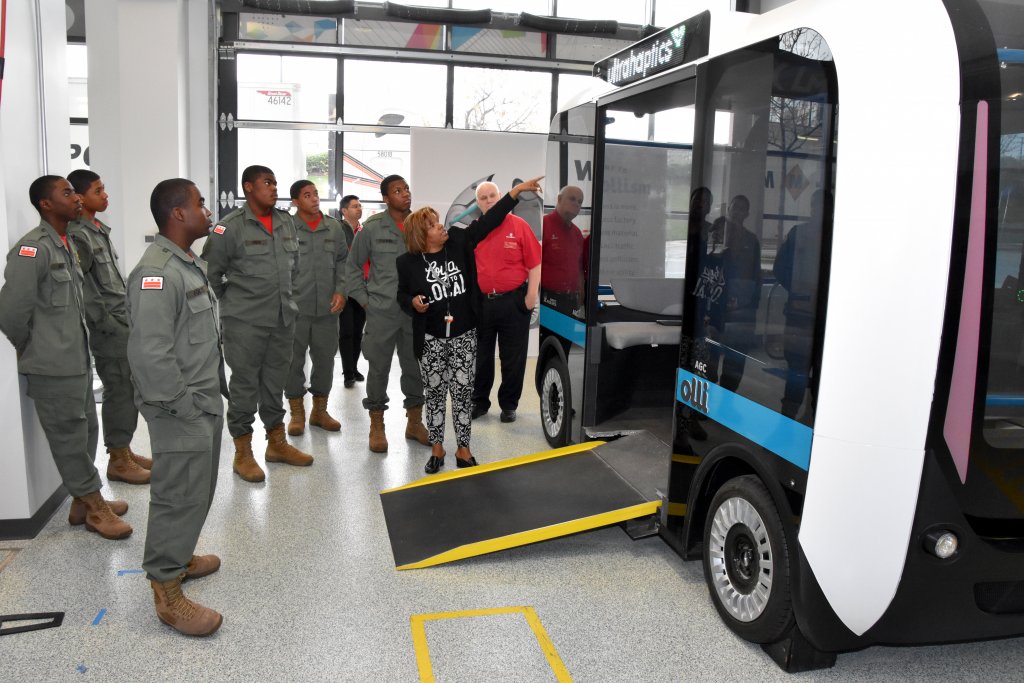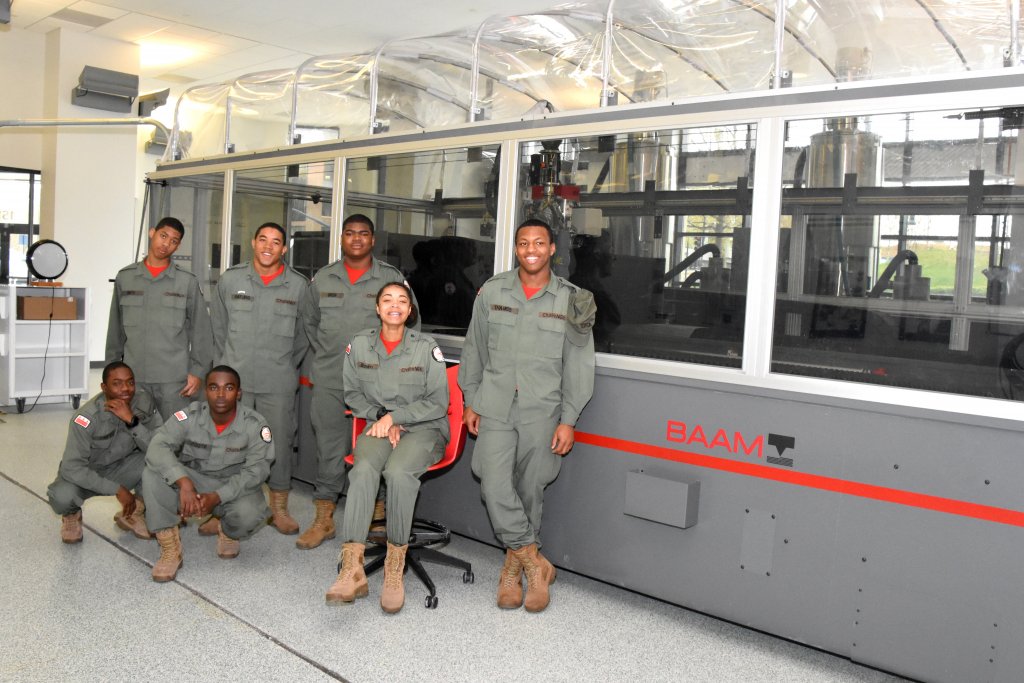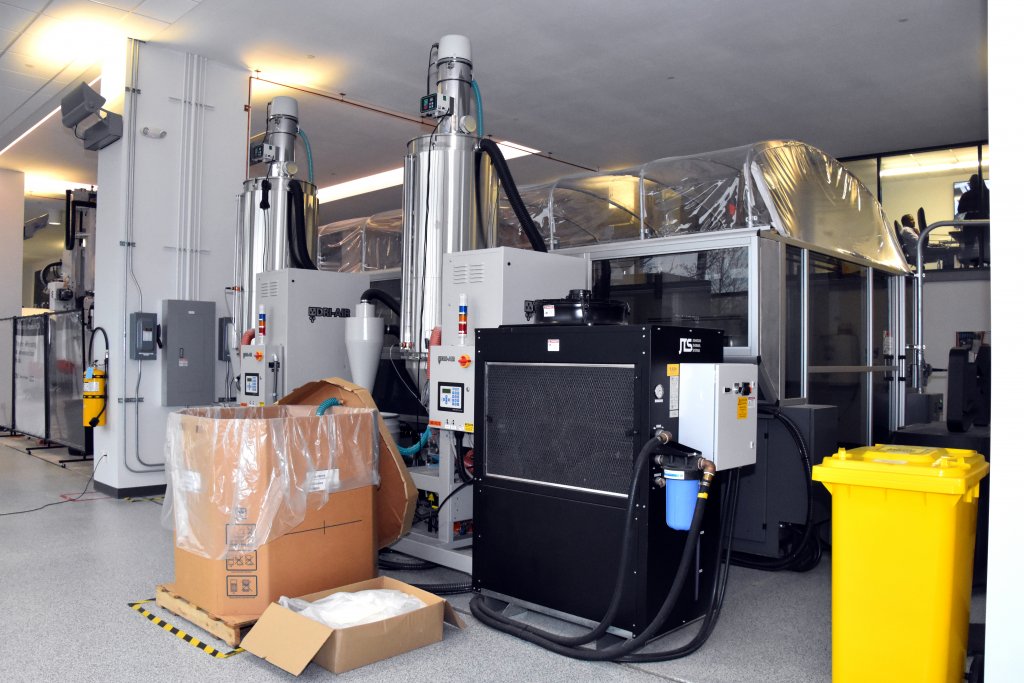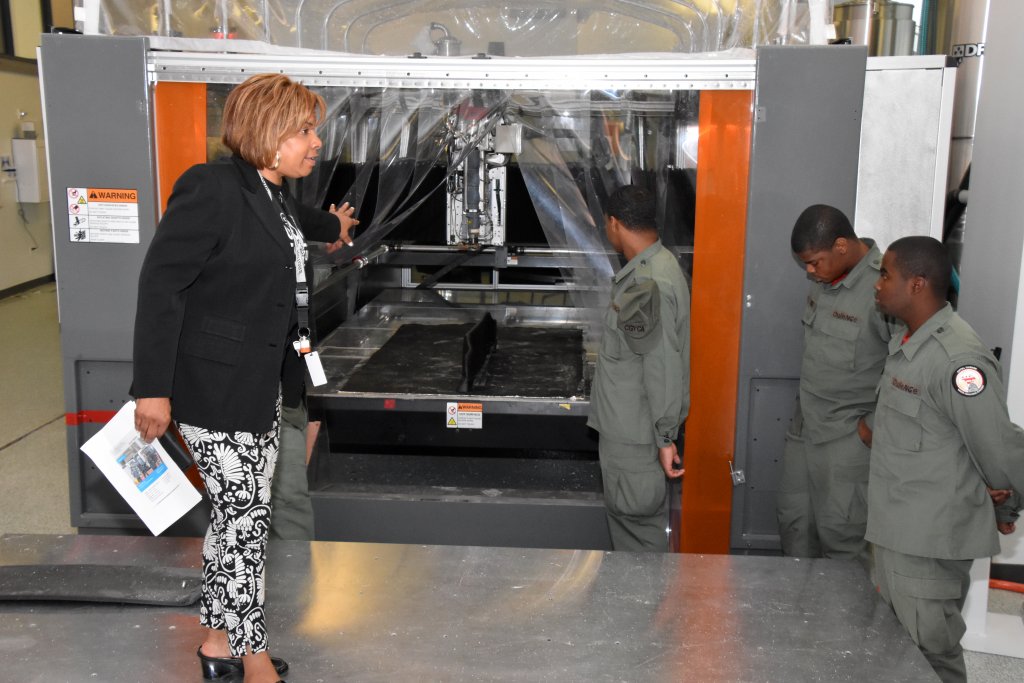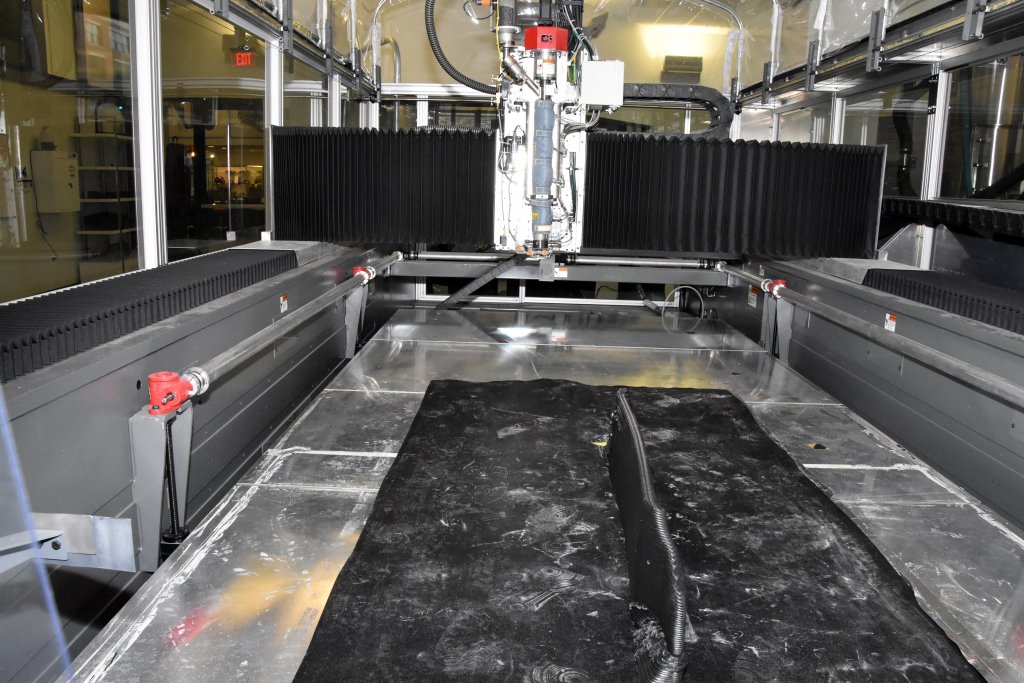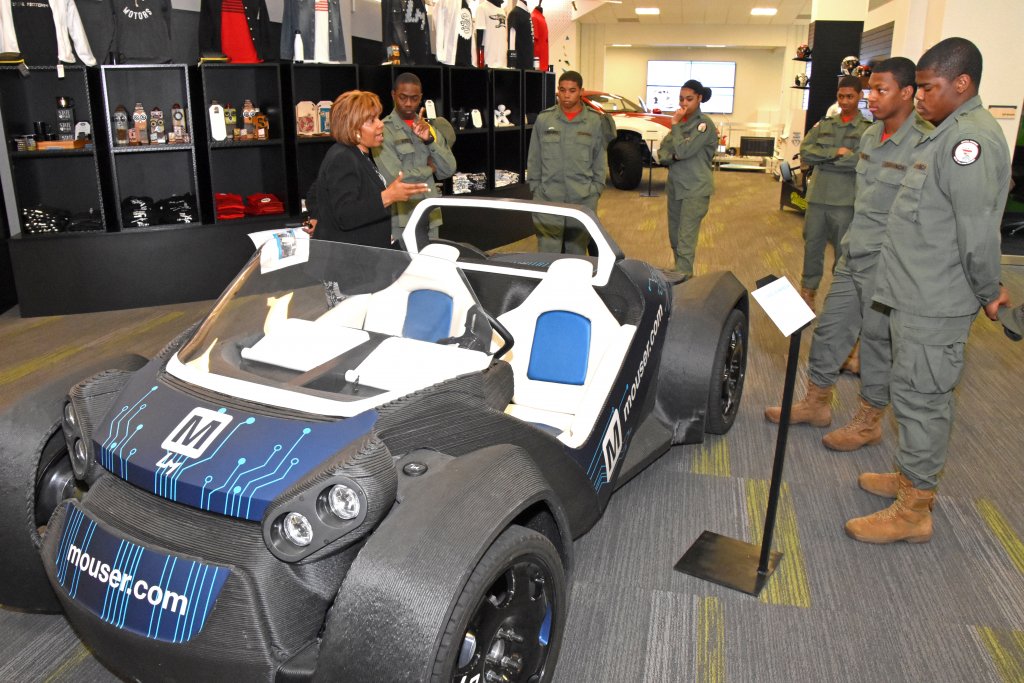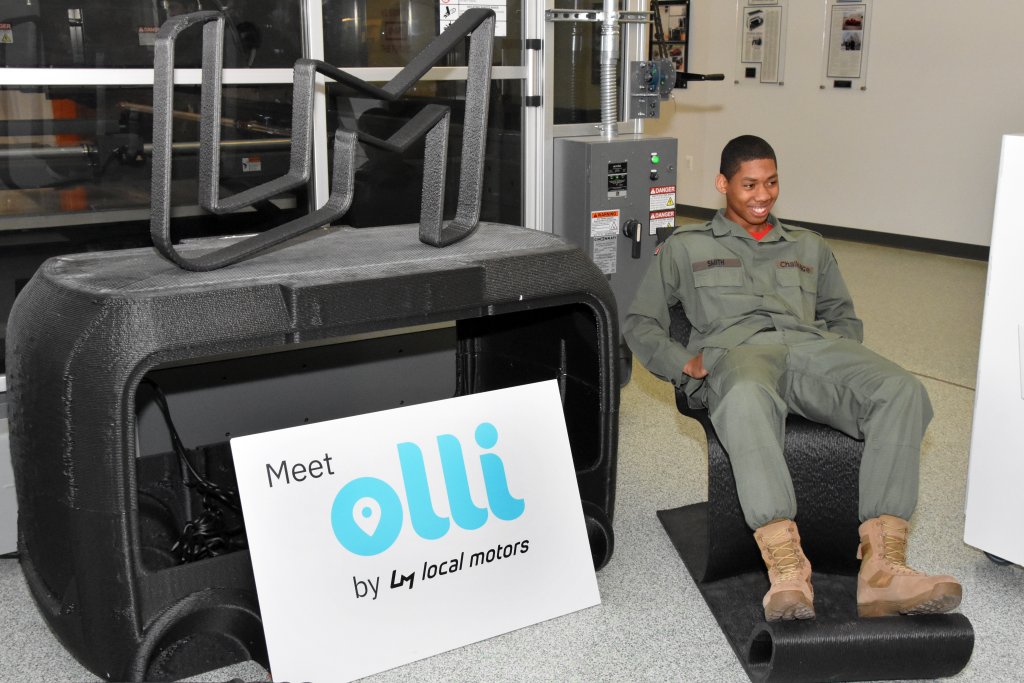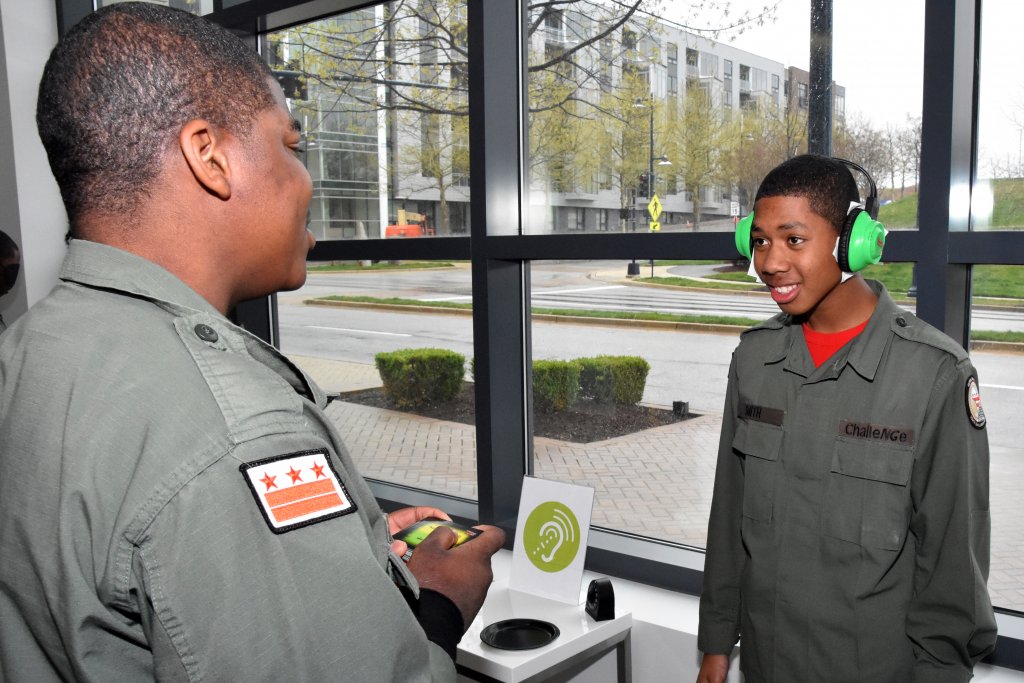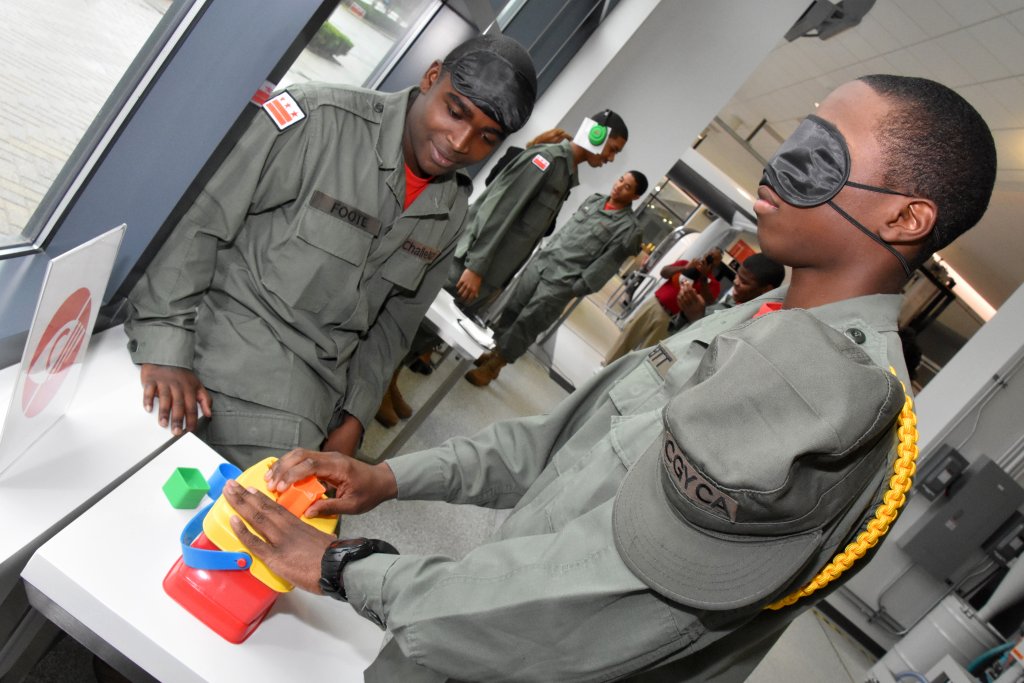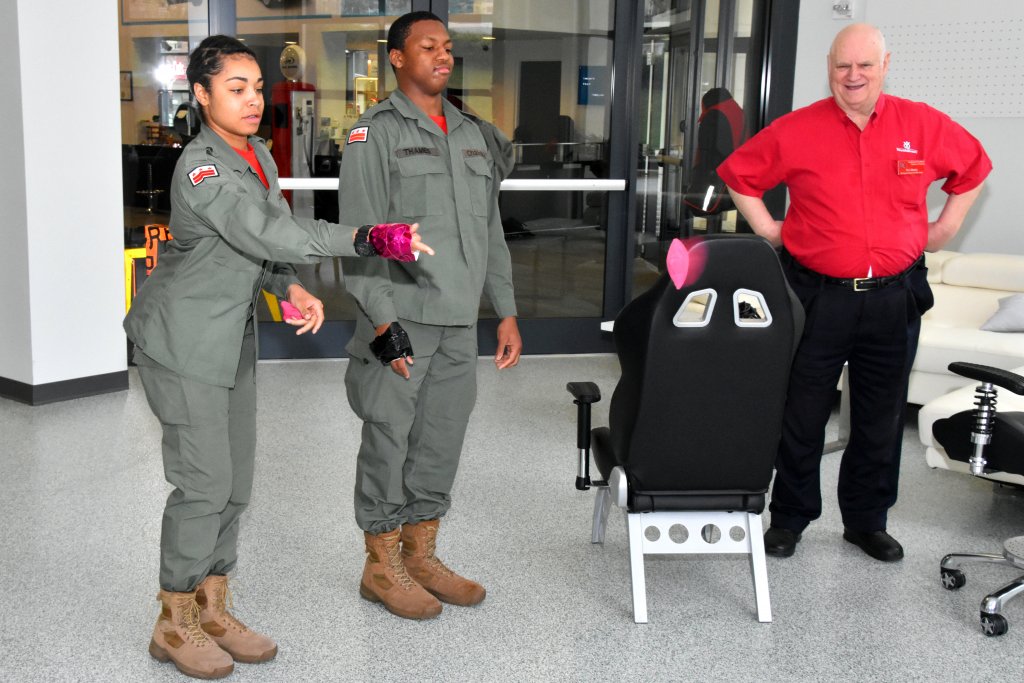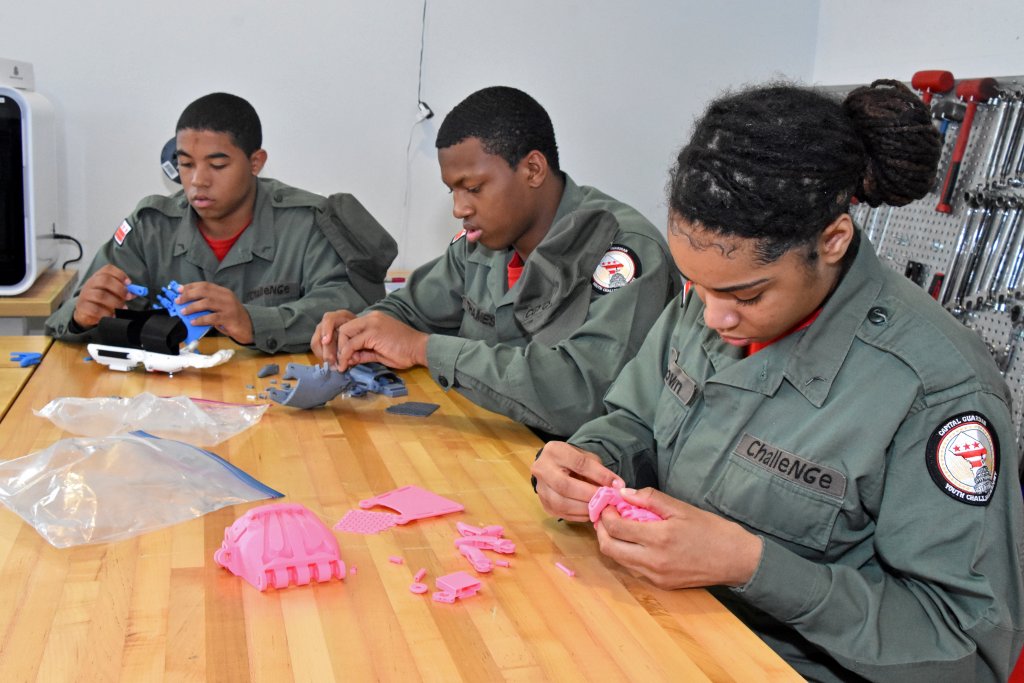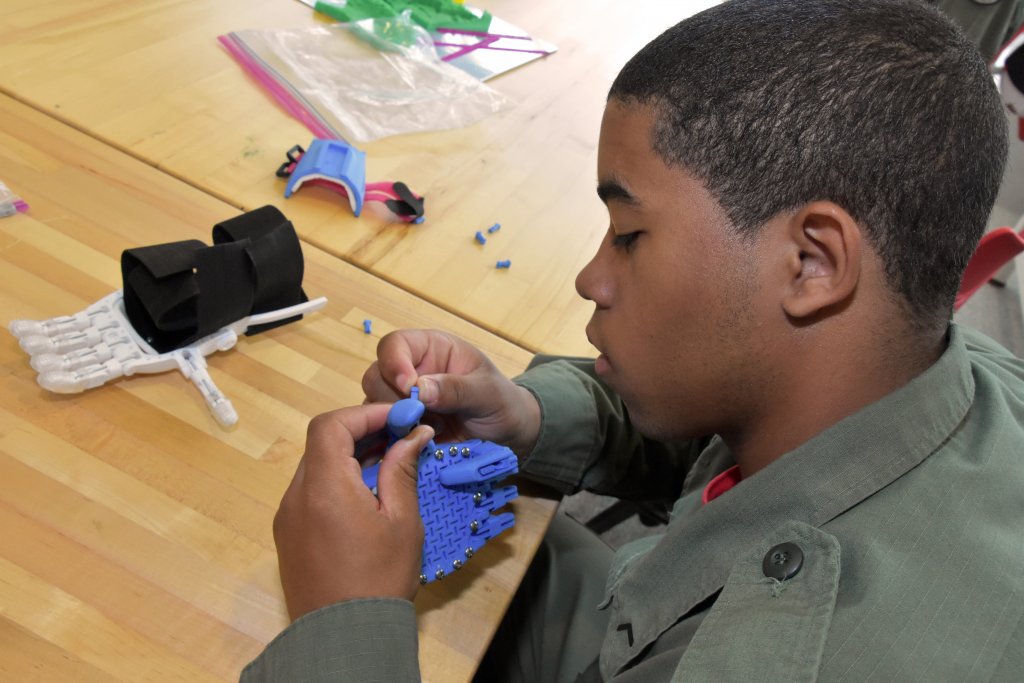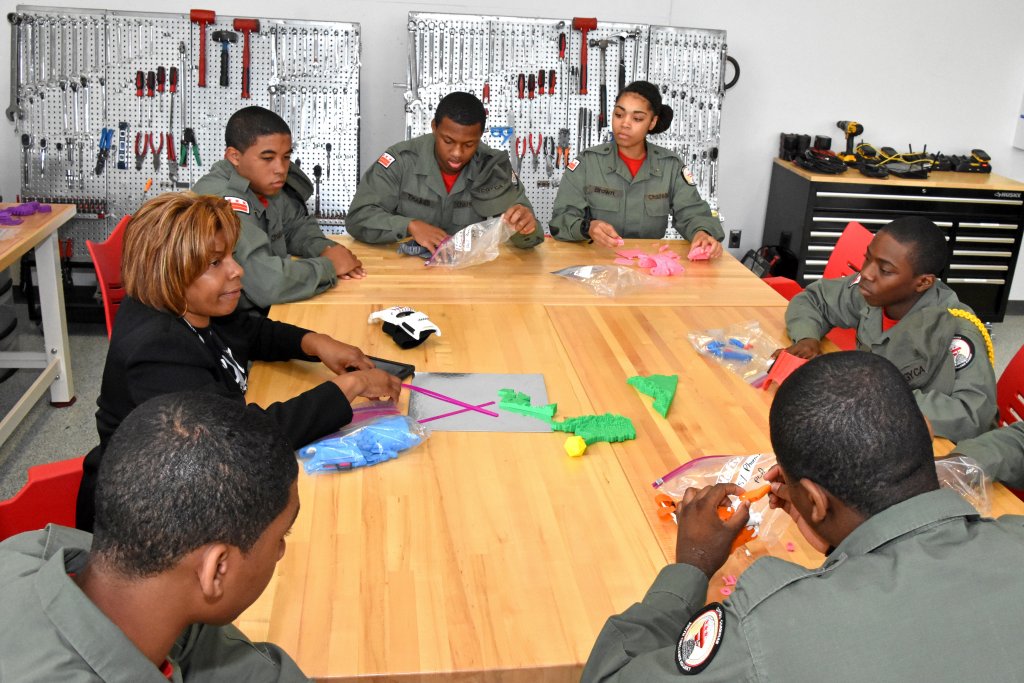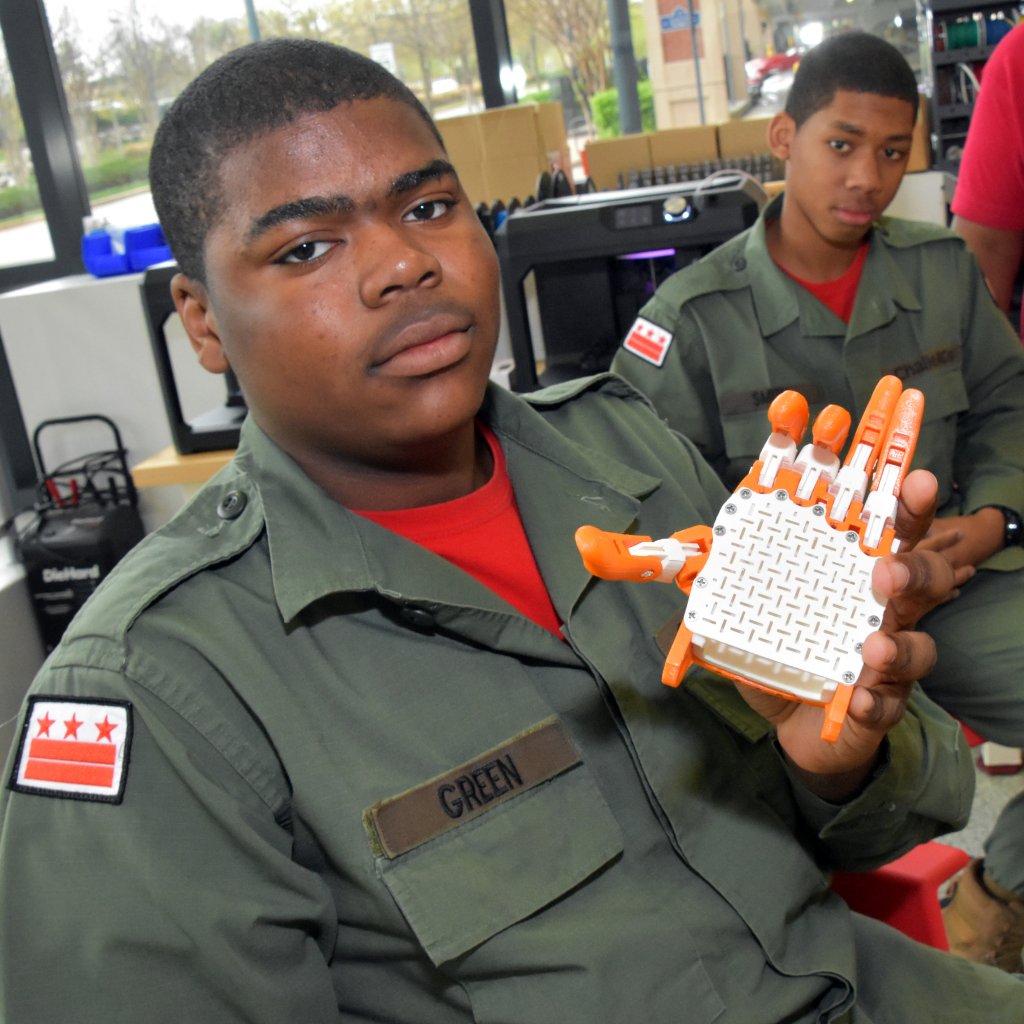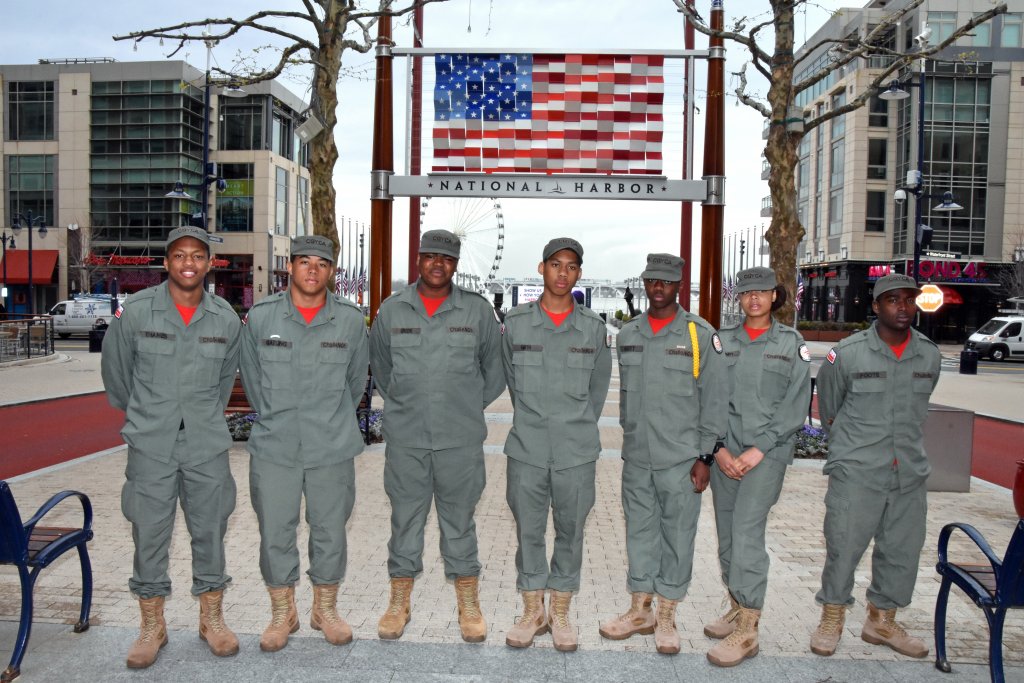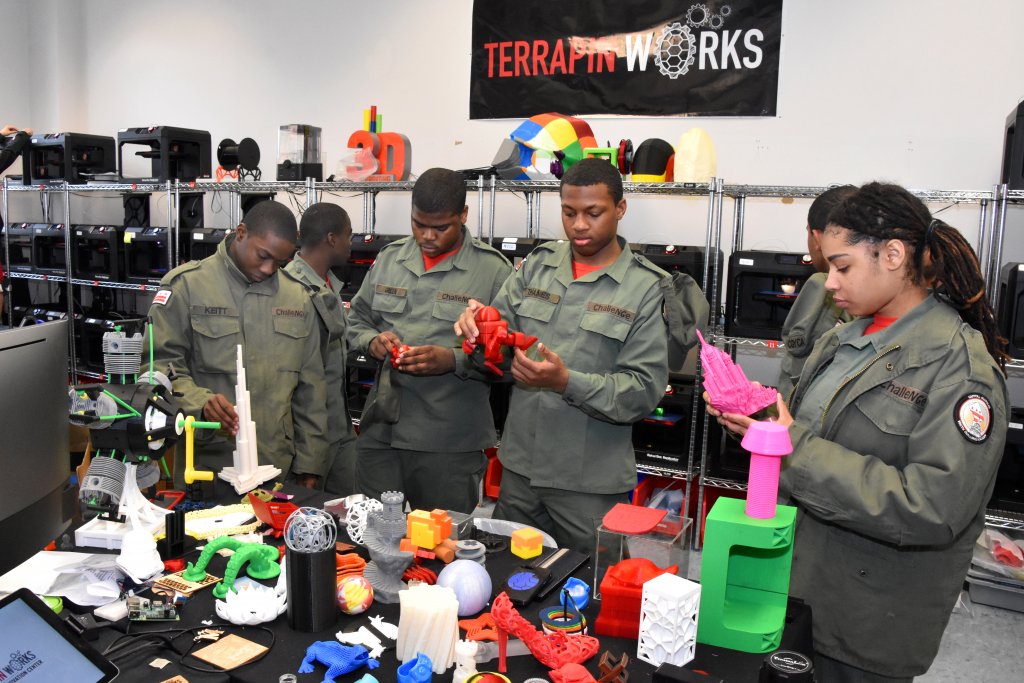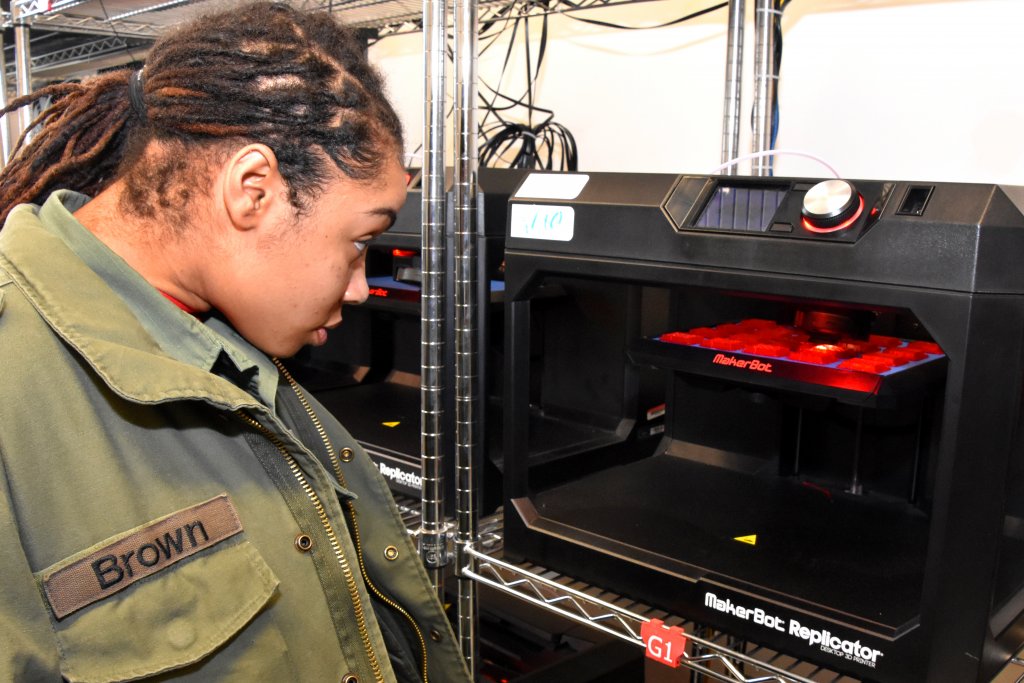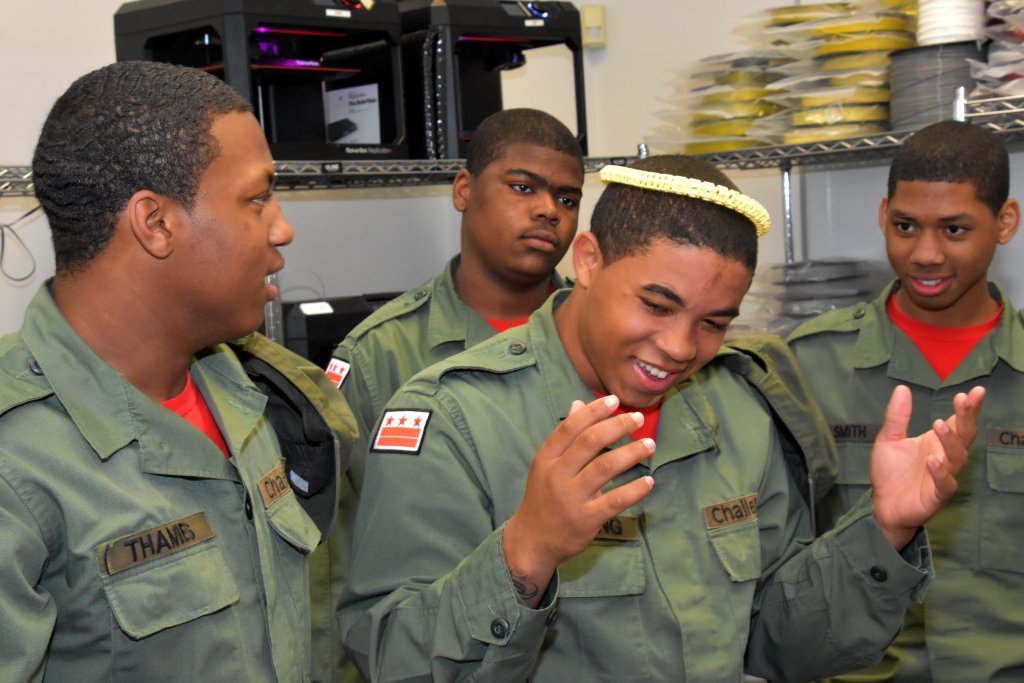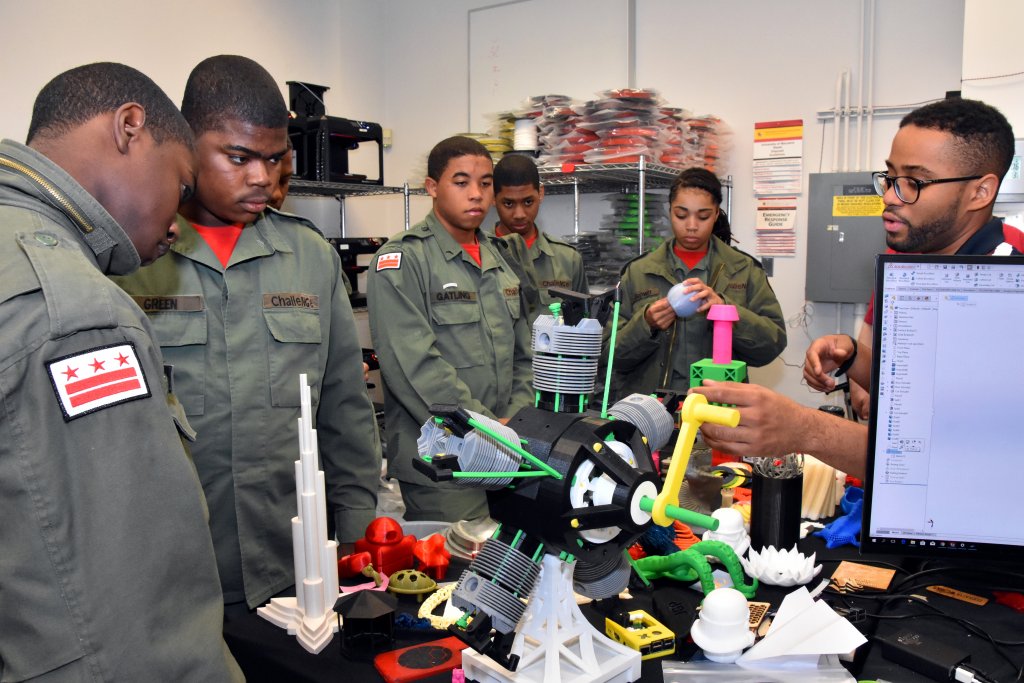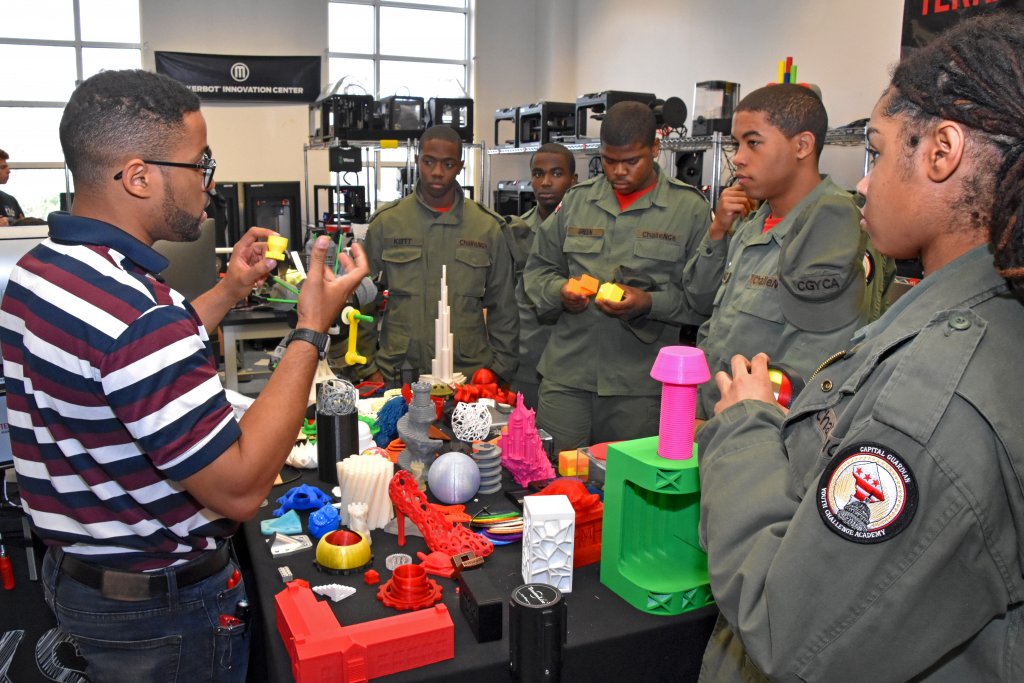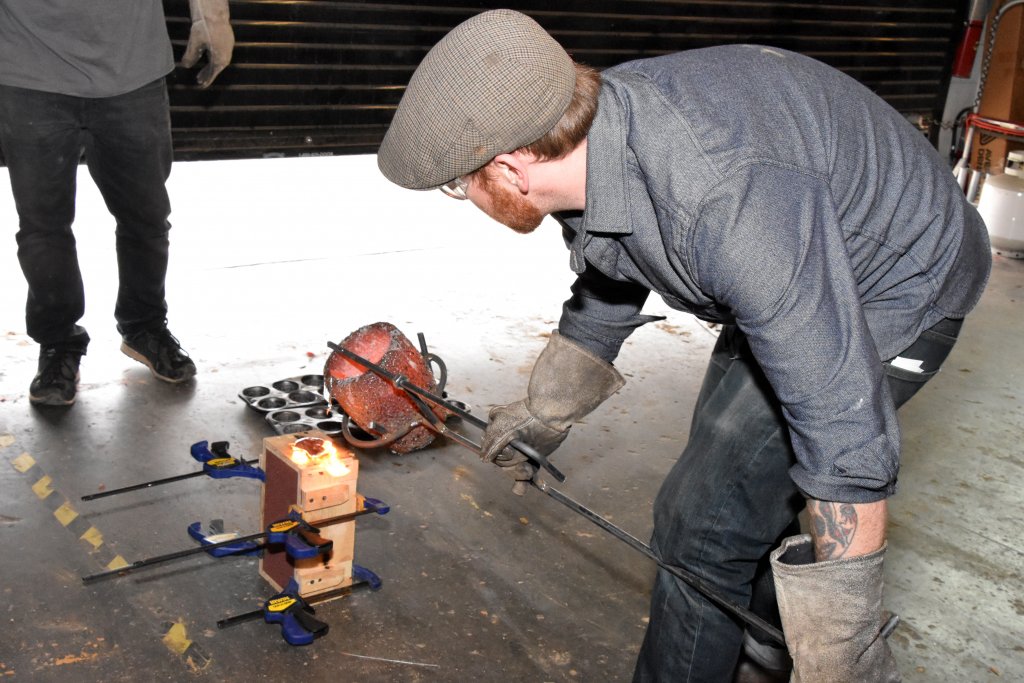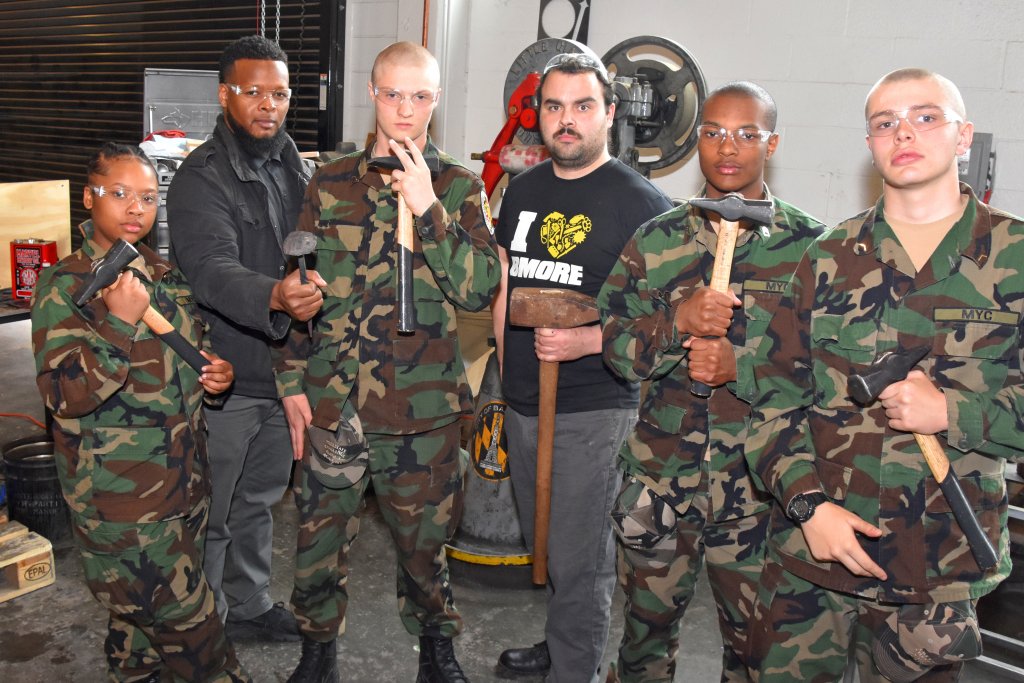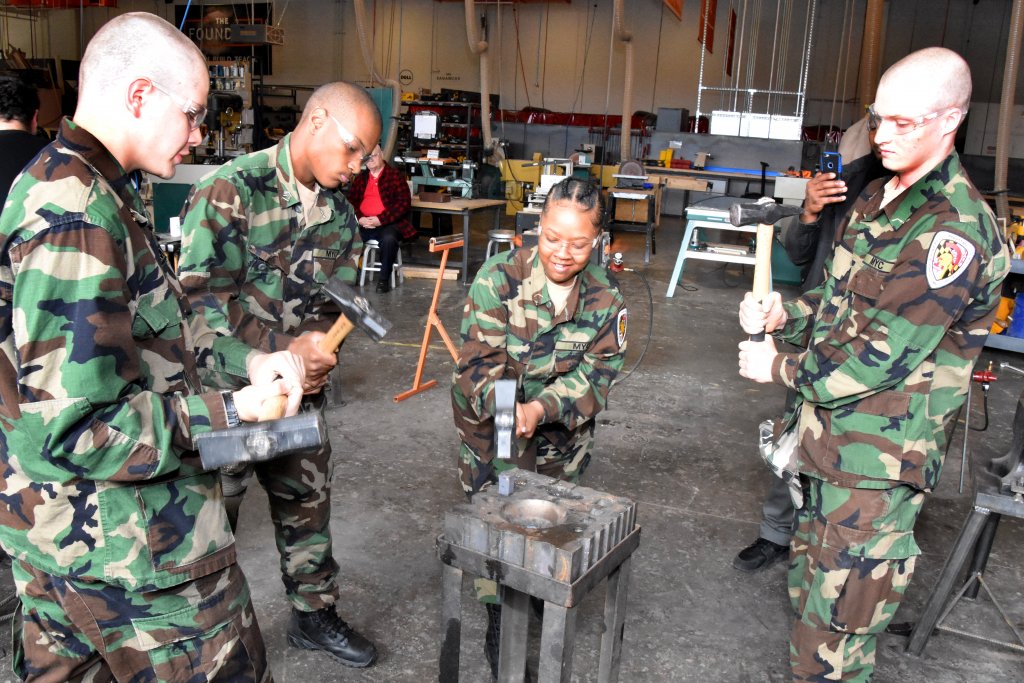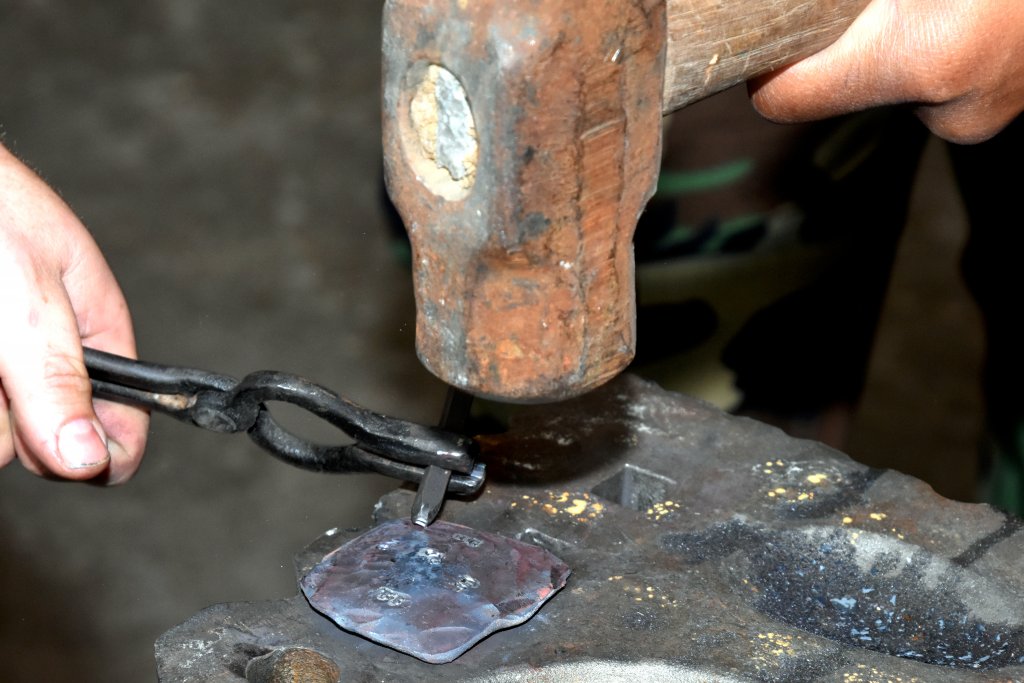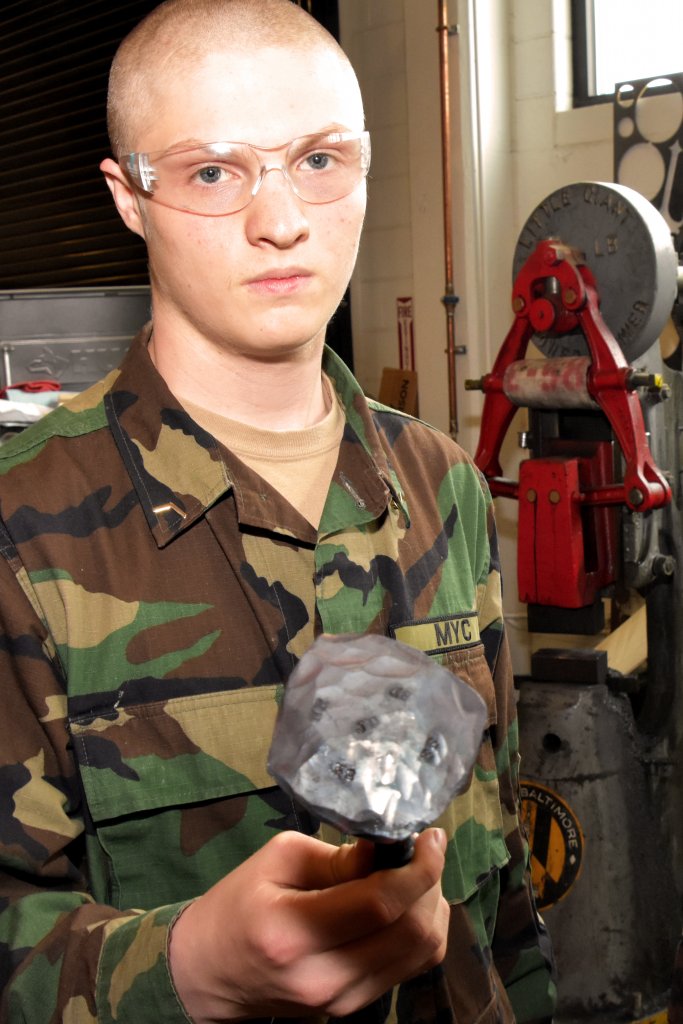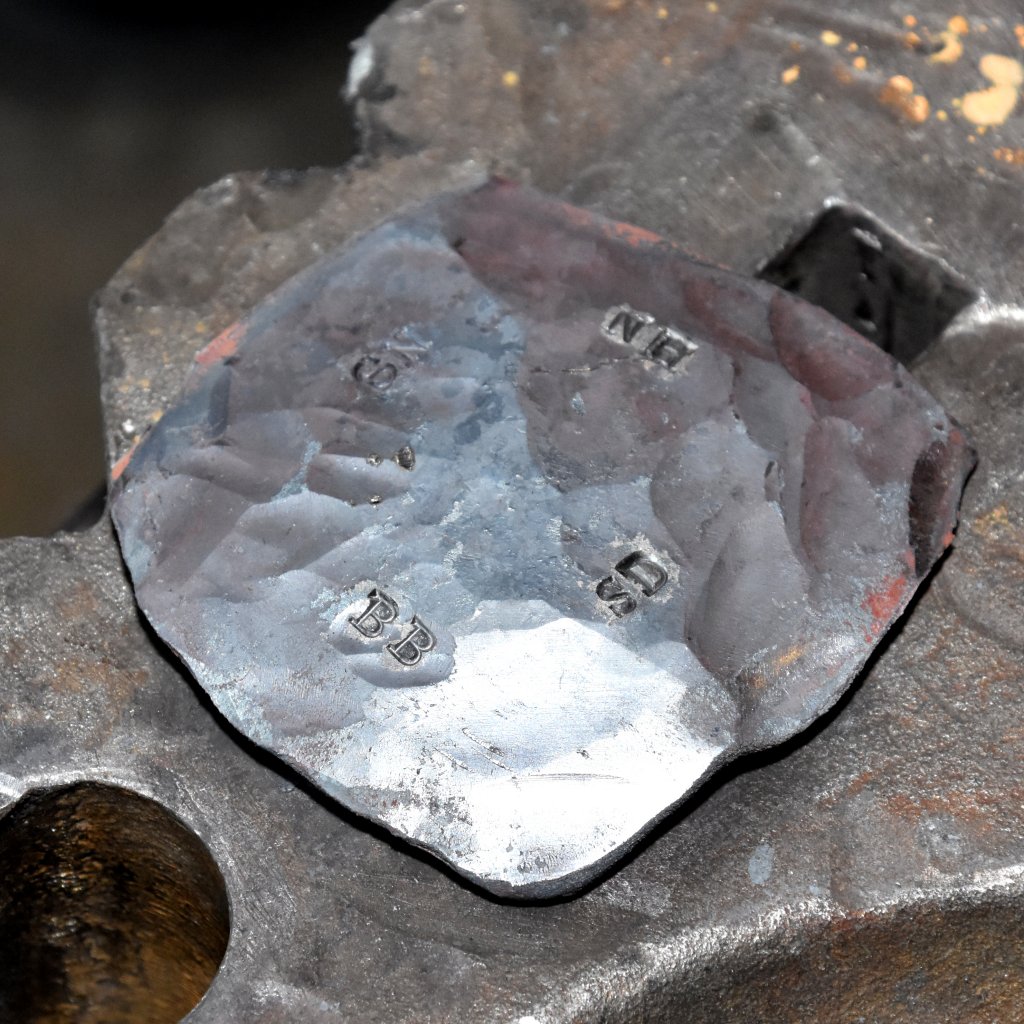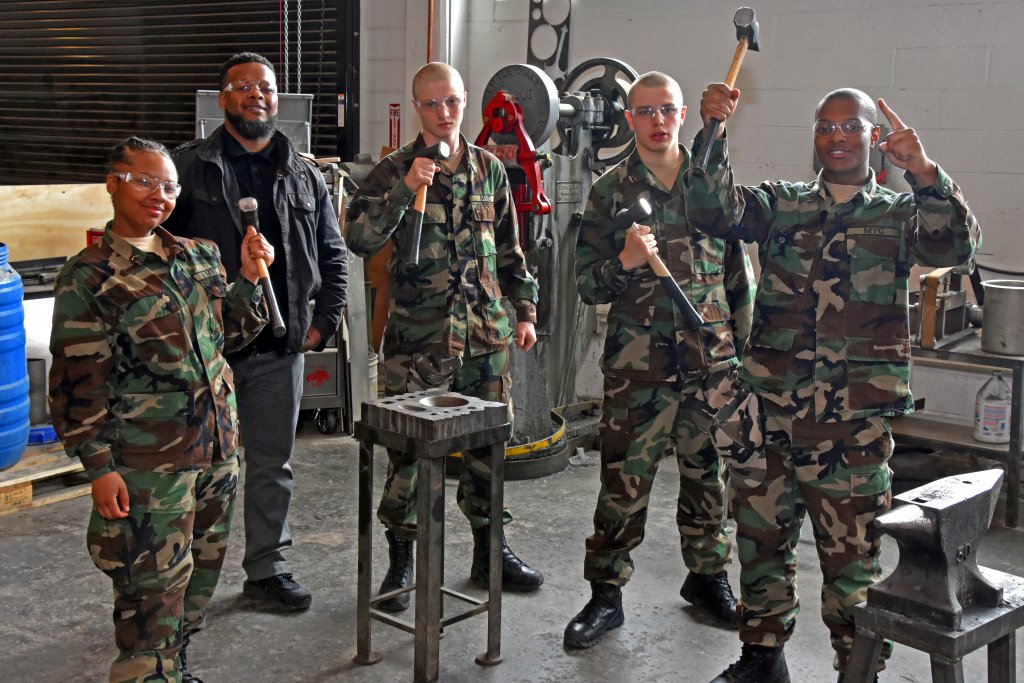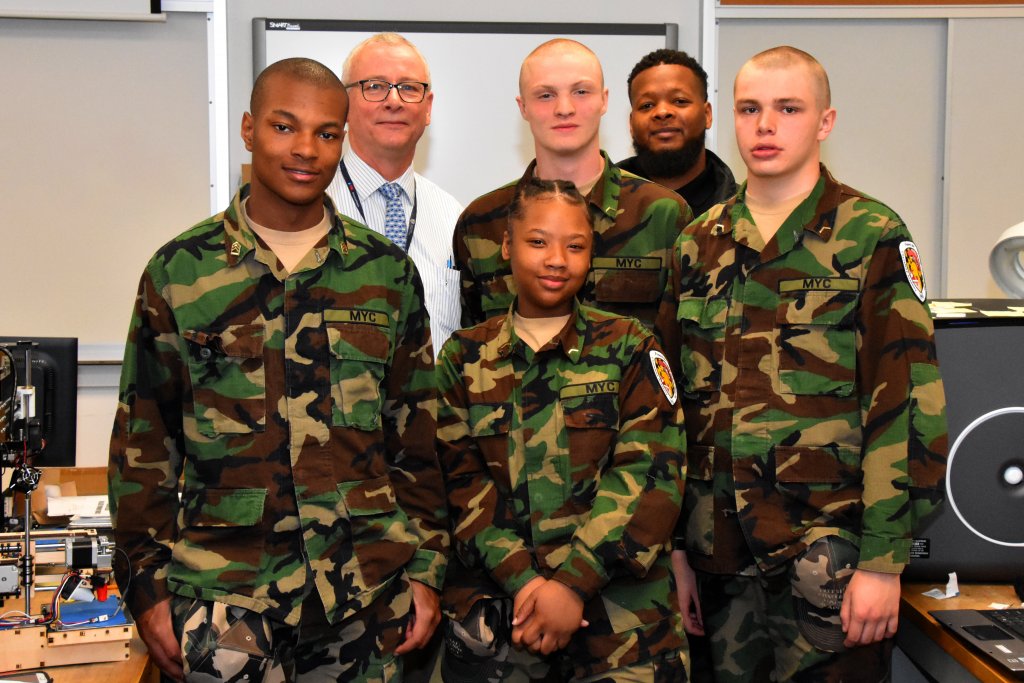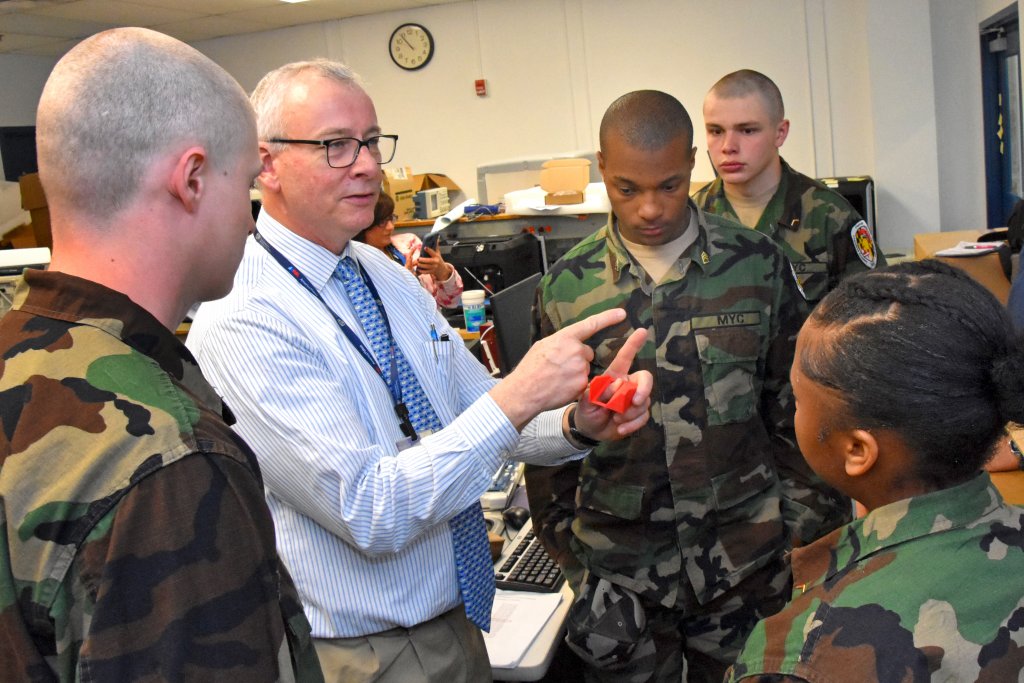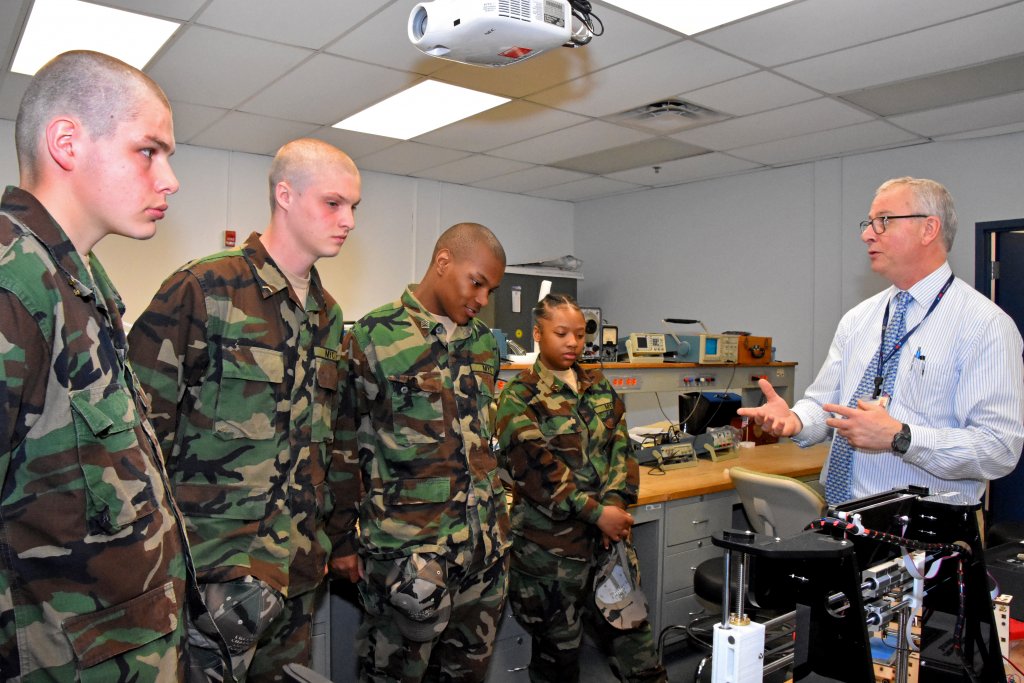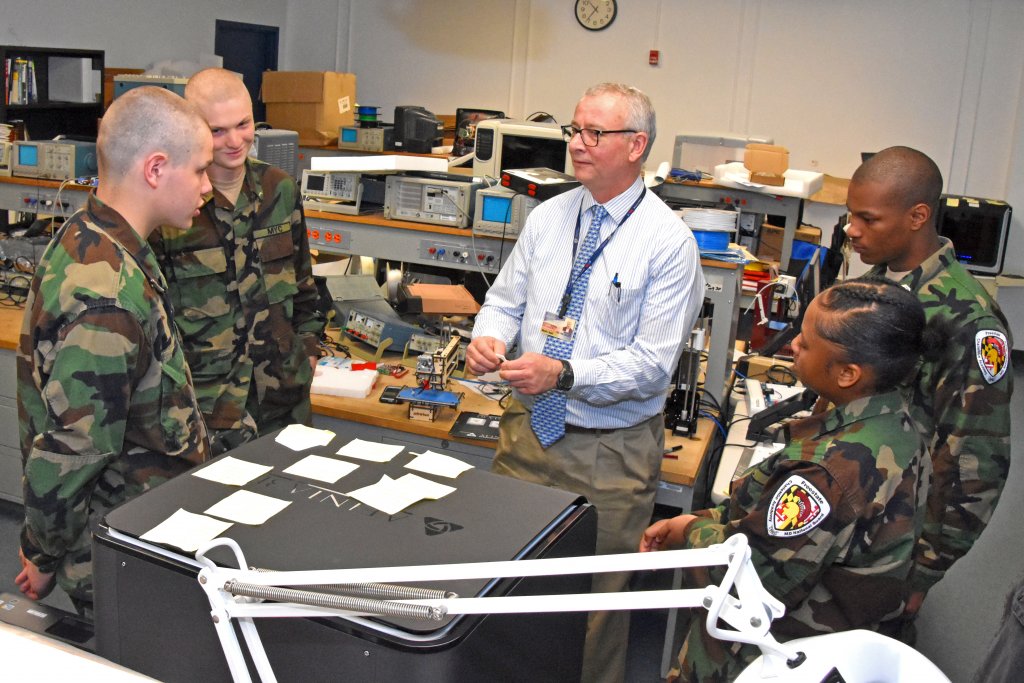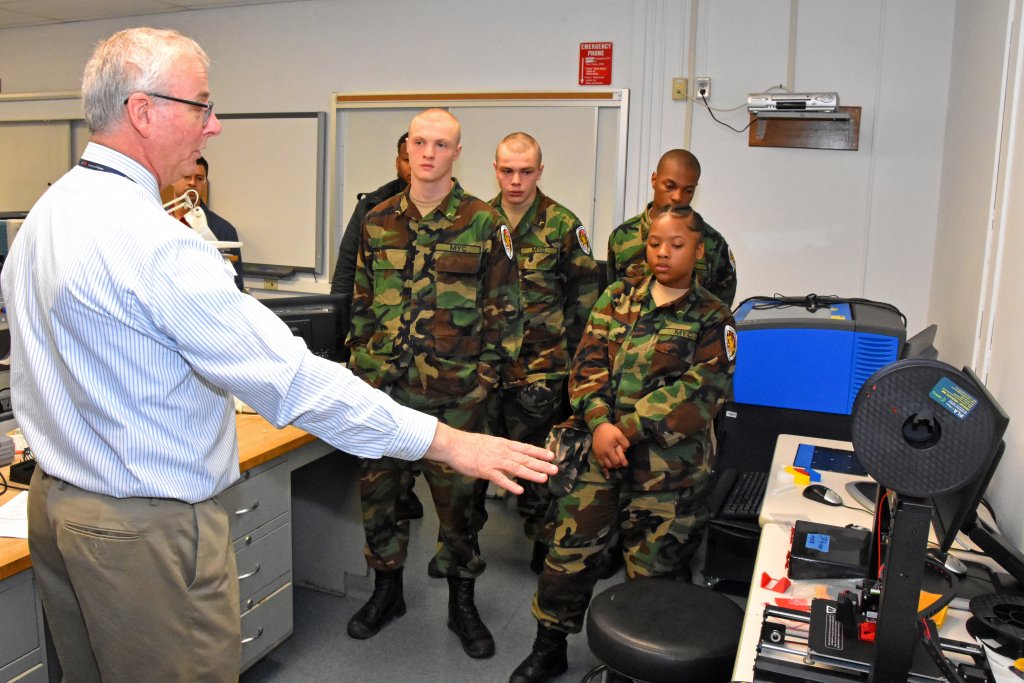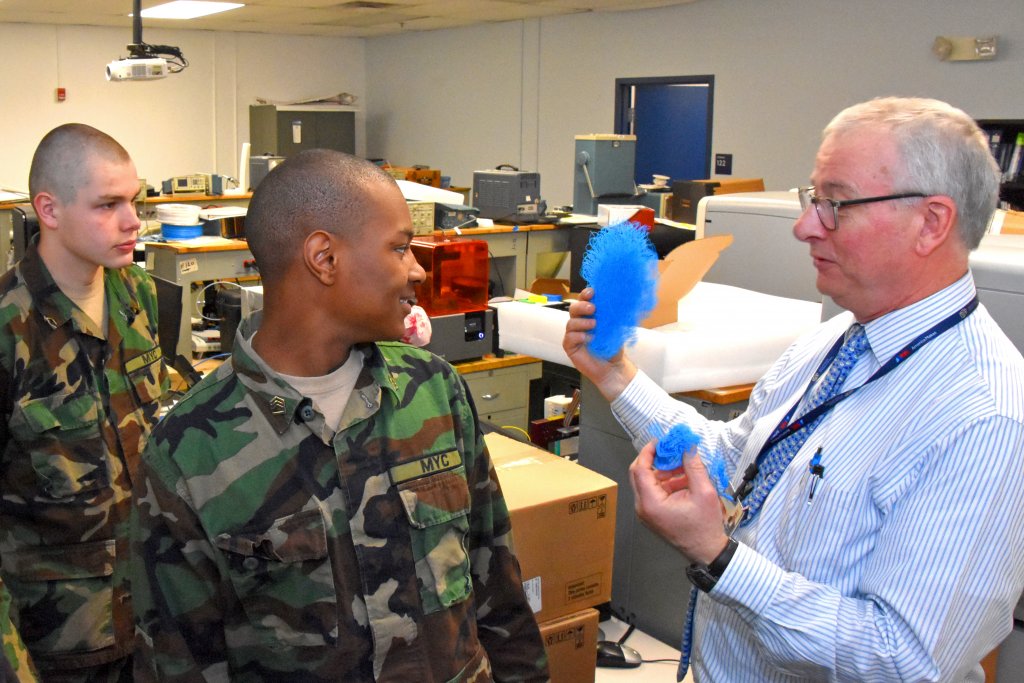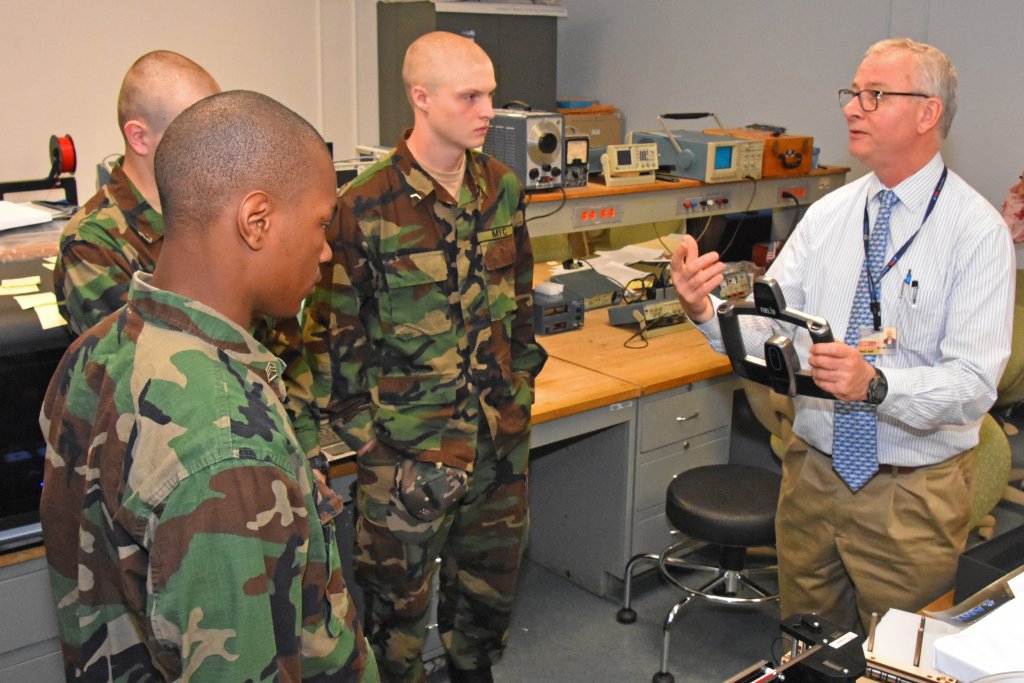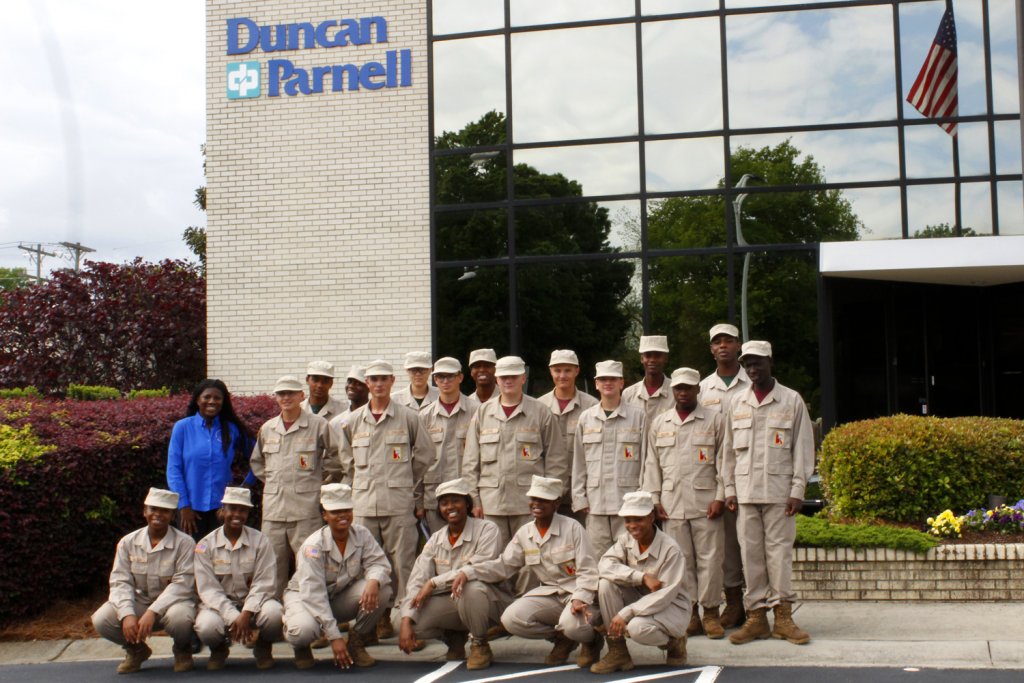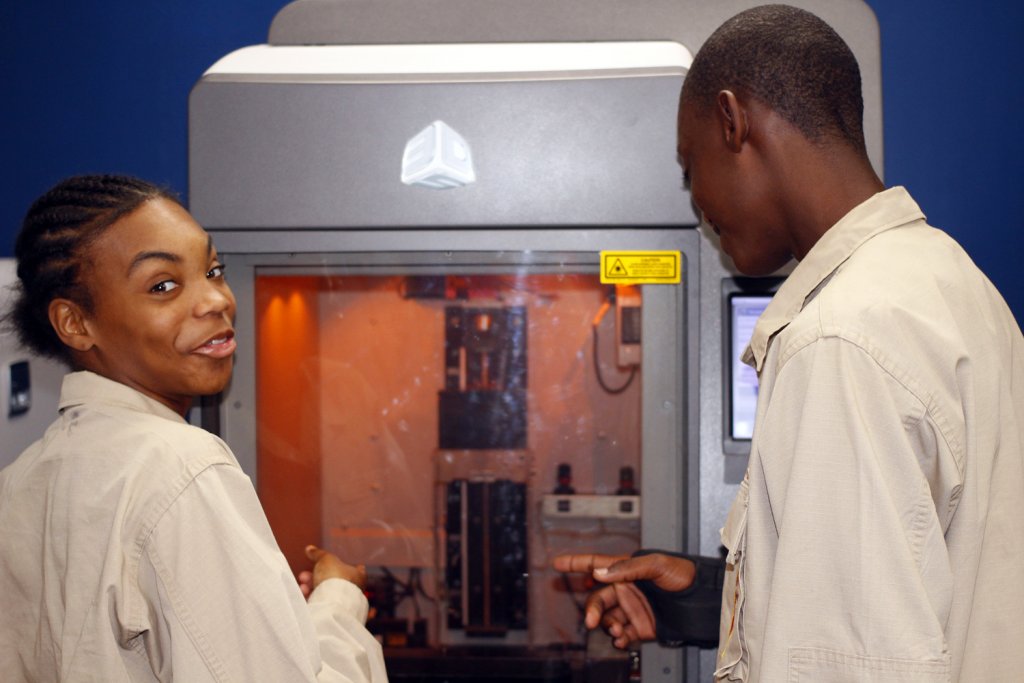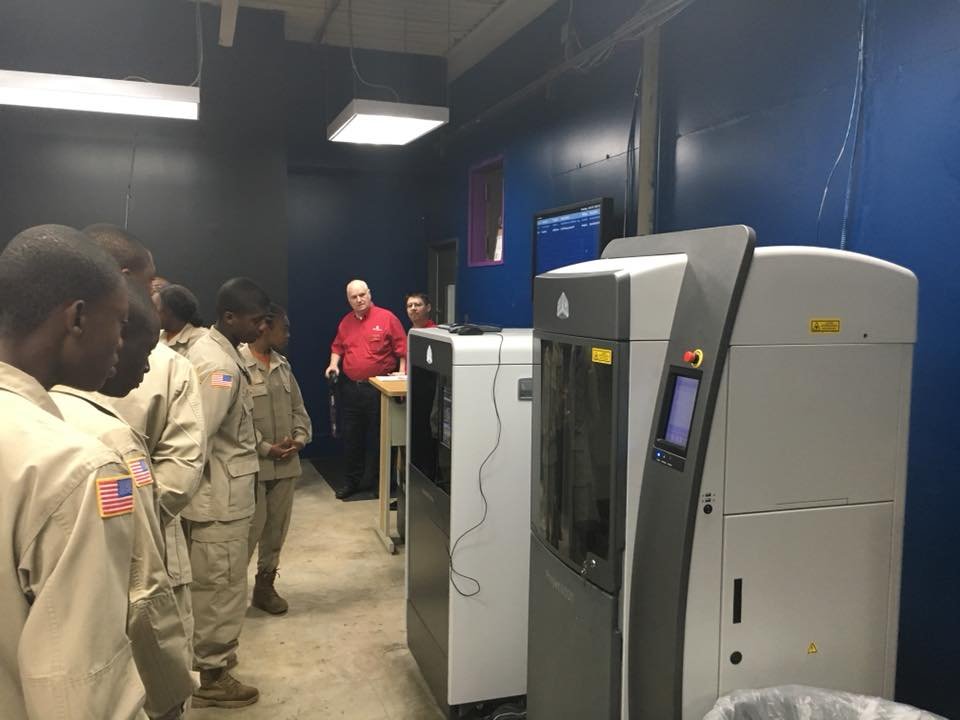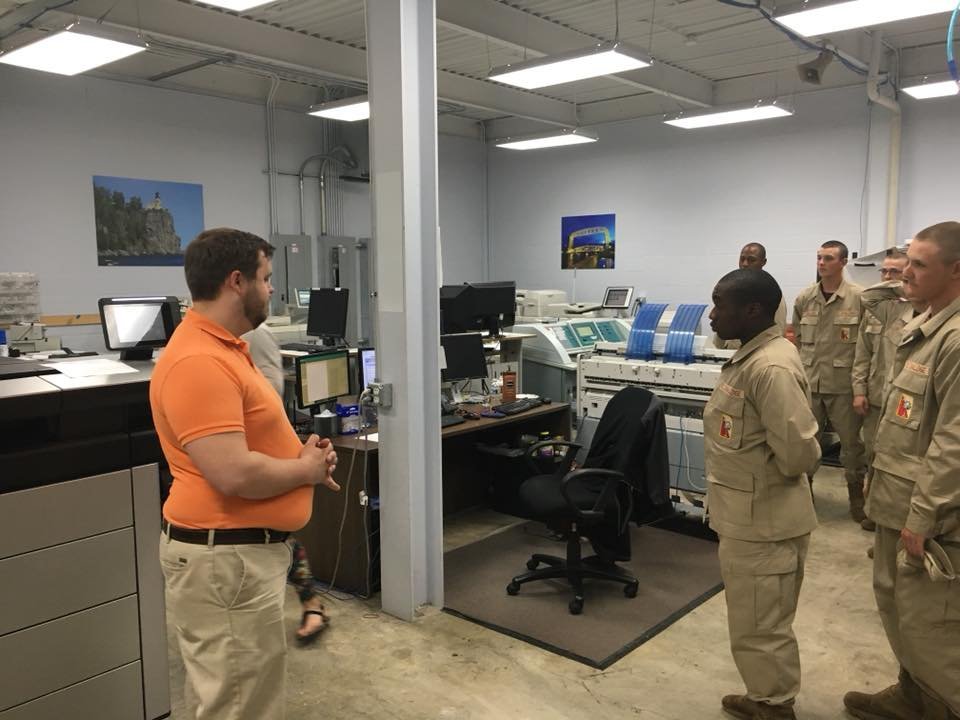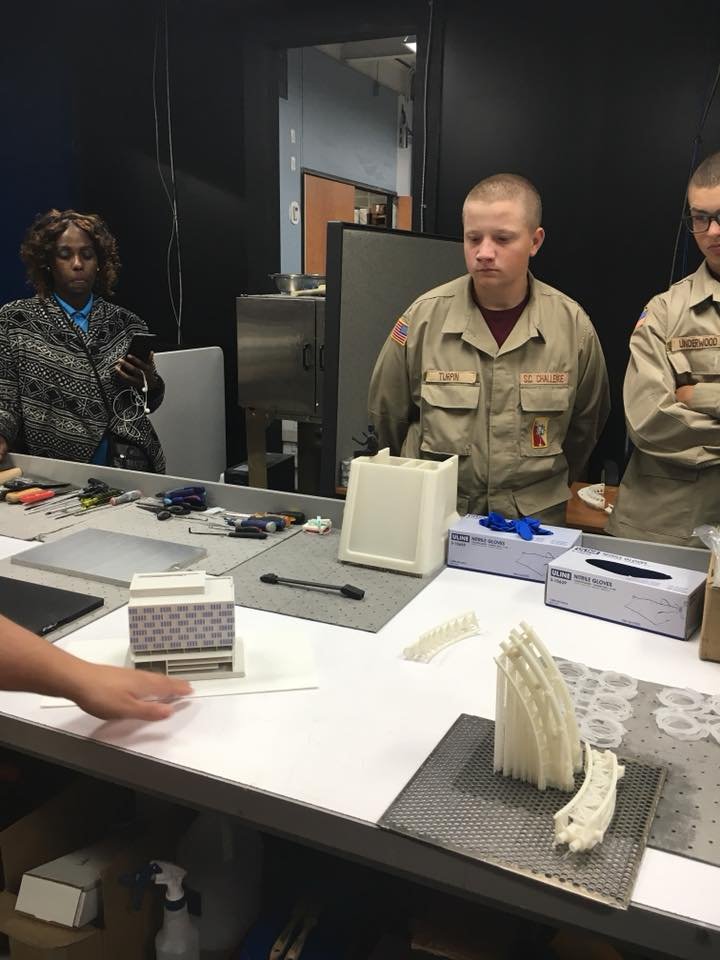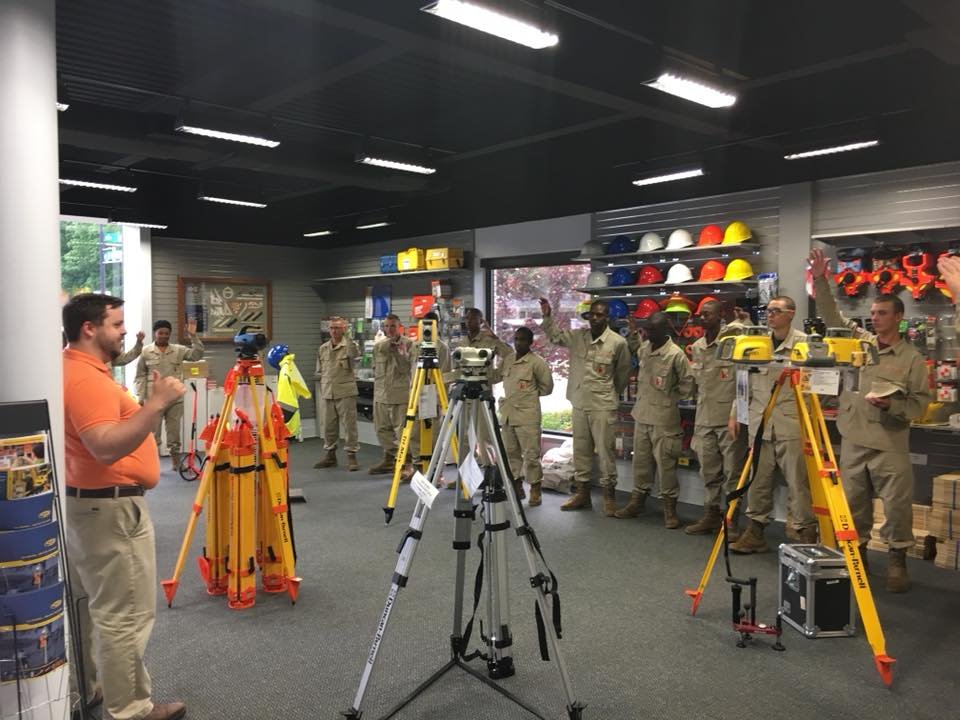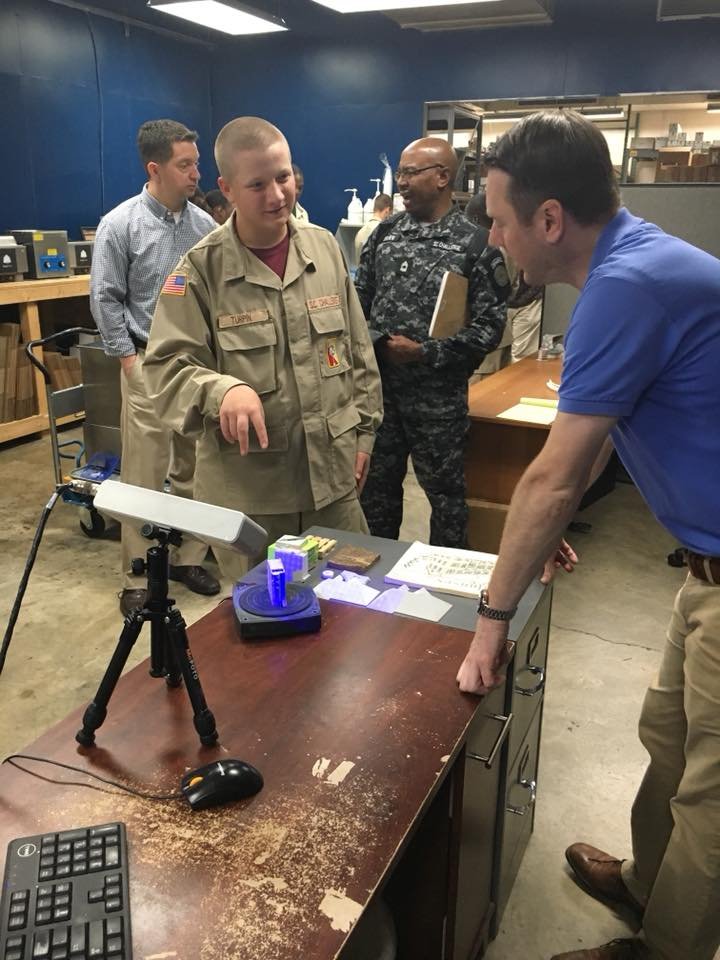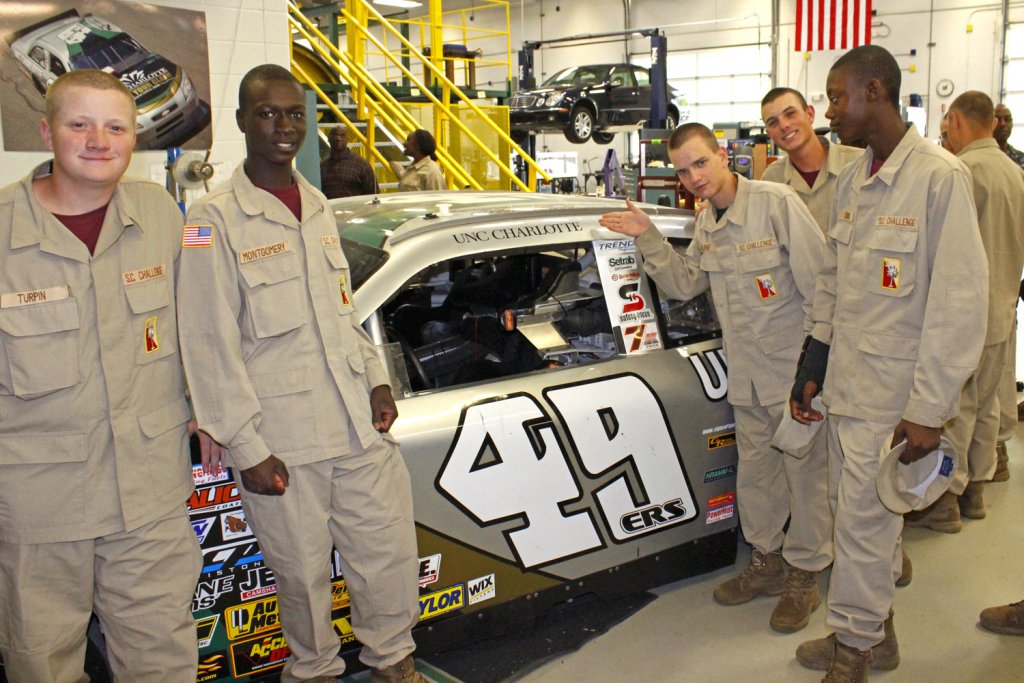Visiting colleges and businesses where 3D printing is used helps our 3D ThinkLink students understand the real-world value of the skills we teach them.
This month, cadets from Maryland’s Freestate ChalleNGe Academy, the District of Columbia’s Capital Guardian Youth ChalleNGe Academy and South Carolina Youth ChalleNGe Academy took part in Vocational Orientation events that showed them many potential career paths involving 3D design and printing. They also met inspiring people who encouraged them to aim high as they set their sights on the future.
ChalleNGe Academies are military-style alternative schools that offer at-risk teens a second chance. Most of the students dropped out or were kicked out of regular high schools. So the cadets in our 3D ThinkLink classes probably didn’t expect to have much in common with someone like Nathan Lambert, a top graduate student at the University of North Carolina at Charlotte.
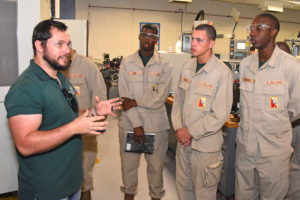
But as Nathan helped lead a tour of the university’s Mechanical Engineering Department on October 17, the SCYCA cadets discovered that he’d hated high school and barely managed to graduate. After six years in the military, which included time as a paratrooper in Afghanistan, he came home with new life experiences and a sense of self-discipline. Nathan decided to become a mechanical engineer, even though it meant going back to school for years.
College is different from high school, Nathan told the cadets, because you have more control over your schedule and you can focus on subjects you’re passionate about. He started at a community college and eventually enrolled at UNCC, where his wife Brittney Lambert is also a mechanical engineering grad student. The Lamberts both urged the cadets to think about going to college, even if – like Nathan – they’d never considered it in high school.
UNCC Mechanical Engineering Professor Dr. Jeff Raquet, who specializes in 3D printing, introduced the cadets to the school’s rocketry team. The students showed the cadets the rocket they’re building for this year’s NASA Student Launch Competition, a project that involves 3D design and printing as well as traditional subtractive manufacturing and many other aspects of engineering. The competitors must design, build and test a reusable rocket that carries a payload a mile high and returns safely to the ground. UNCC won $2,500 for placing second in last year’s competition and is aiming for the top prize of $5,000 this time.
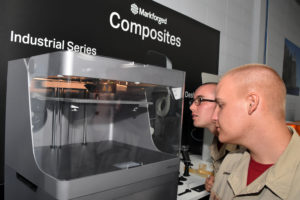
Also during their visit to Charlotte, the SCYCA cadets toured Duncan-Parnell’s office to see a wide variety of the latest 3D printers. The company has hosted many Vocational Orientation events for our students and received YouthQuest’s Community Partner of the Year award in 2016.
The Freestate 3D ThinkLink students got an impromptu lesson in entrepreneurship while they toured The Foundery in Baltimore. As staffer Eric Smith was showing them the machines, some Foundery members struck up conversations with the cadets and told them what they’ve been able to accomplish by using the industrial makerspace as their own workshop.
There’s no need to get involved in shady hustles on the street, they said, when you can use The Foundery’s equipment to turn a few dollars’ worth of raw material into custom-made products worth hundreds. One craftsman showed off a $13 mirror that he’d laser-engraved with his own design to create a sign he would sell for 10 times as much to a local barbershop.
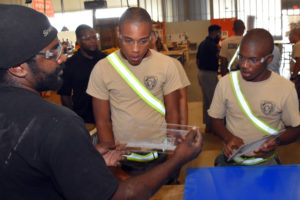
Eric reinforced the message, telling the cadets that what’s most valuable is knowledge. He reminded the cadets that the CAD (computer-aided design) skills they use for 3D printing can also be applied to things like computer-controlled cutting and engraving machines. And you don’t set your product’s price based on how long it takes to make it, he said, but on what your knowledge of how to make it is worth to your customer.
One place where students can gain that valuable knowledge is Harford Community College, where the Freestate cadets began their day of Vocational Orientation on October 9. Professor David Antol showed our students the school’s 3D printing lab and explained the opportunities available for them to build on the skills they’re learning in our introductory 3D ThinkLink course.
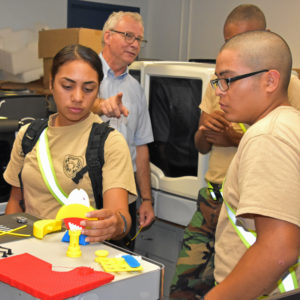
HCC is one of the few community colleges that emphasizes 3D printing. It offers an associate degree in engineering technology in a program that focuses on applied knowledge of manufacturing processes, along with critical thinking, problem solving and communications skills – all of which are in high demand among employers. The school is also preparing to launch a certificate program in additive manufacturing.
Because HCC offers these programs and is located close to the Freestate campus, it’s an excellent resource for cadets as they make their post-graduation plans.
Like the South Carolina students who visited UNCC, the Capital Guardian cadets’ Vocational Orientation experience included an in-depth look at a major university’s 3D printing operations along with an overview of its mechanical engineering program.
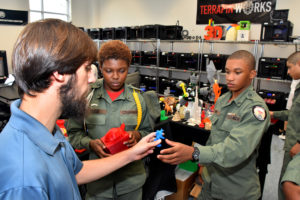
The students from DC toured the Terrapin Works facilities at the University of Maryland’s main campus in College Park, guided by Senior Lab Manager John Fitzell. He showed them printers that use plastic filament, similar to those they use in class, along with machines that print with specialized materials such as liquid resin, flexible polymers and even metal. Seeing the many different types of printers and the objects they create helped the students understand the applications for each type of 3D printer.
John also took the cadets through some of the labs in Maryland’s recently opened A. James Clark Hall, explaining the projects engineering students complete as they progress through their course of studies, and how they use 3D printing in those projects.
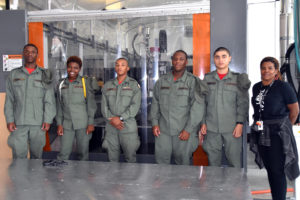
One kind of 3D printer Terrapin Works does not have is the BAAM (Big Area Additive Manufacturing) machine – a giant device with a print bed that’s seven feet wide and 13 feet long that can make objects up to three feet high. The CGYCA cadets saw that machine during their first stop of the day on October 11, when they visited Local Motors at National Harbor. Local Motors uses the BAAM, along with a huge five-axis milling machine to make Olli, a 3D-printed, self-driving electric shuttle bus.
Besides showing our students how 3D-printed vehicles are made, Local Motors Customer Engagement Manager Tracye Johnson introduced them to e-NABLE. It’s a worldwide project that mobilizes people with 3D printers to make prosthetic hands and arms for people who were born missing fingers or who have lost them due to war, disease or disasters. Tracye encouraged the cadets to think about this and other ways they can use their 3D printing skills to help others.
Vocational Orientation is one of our most important tools for changing the lives of our 3D ThinkLink students. The experiences expand the horizons and spark the imaginations of the at-risk youth we serve. Our foundation is deeply grateful to all the organizations that make these events possible.
